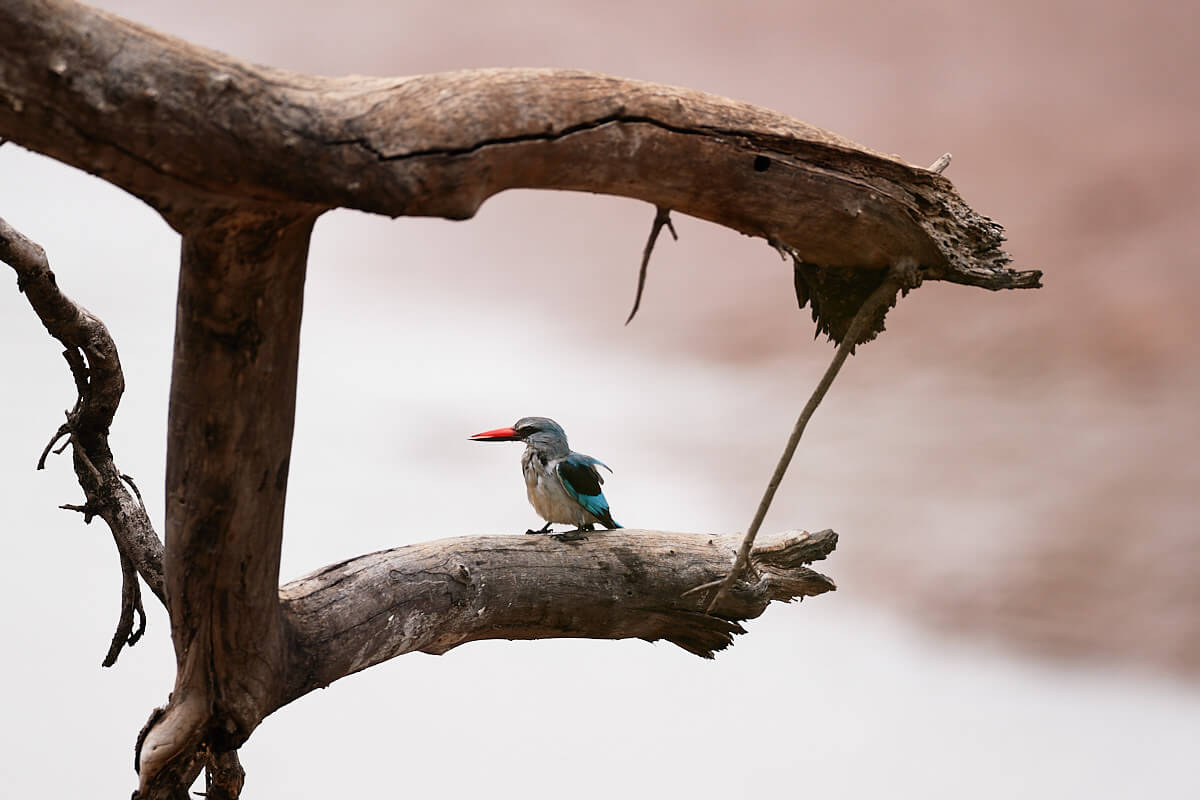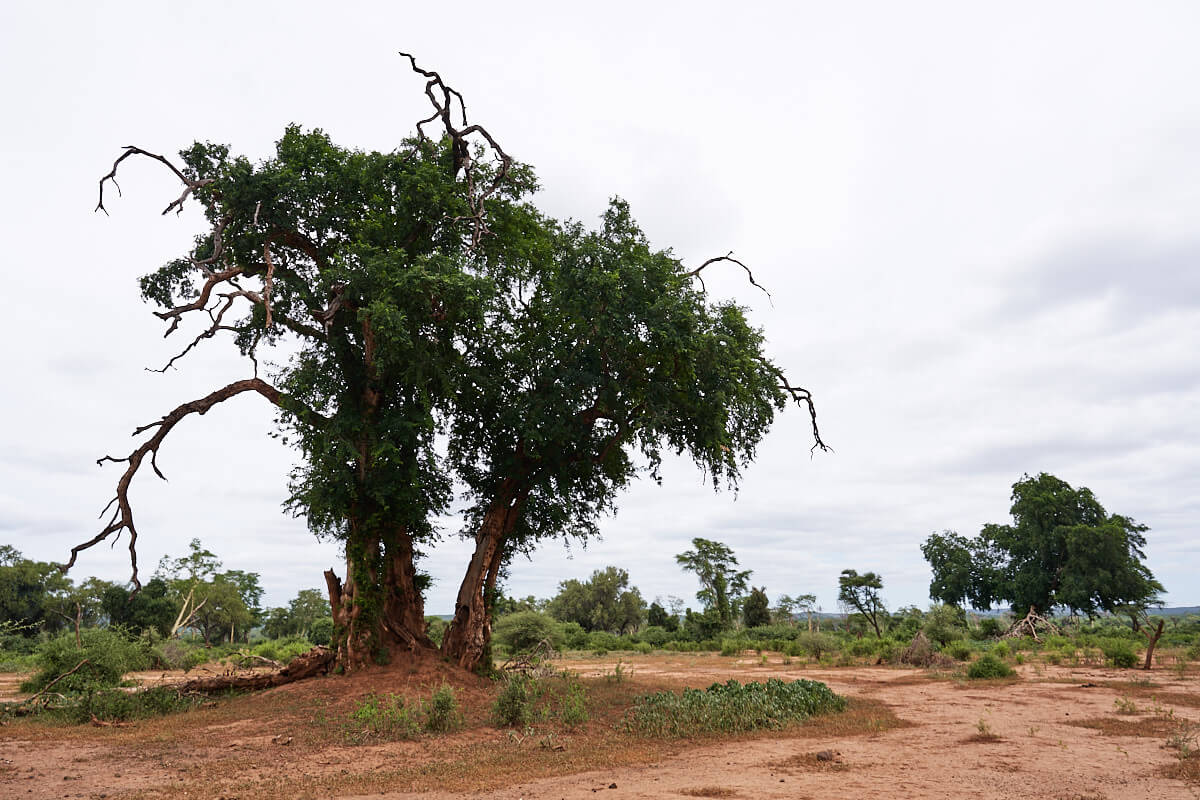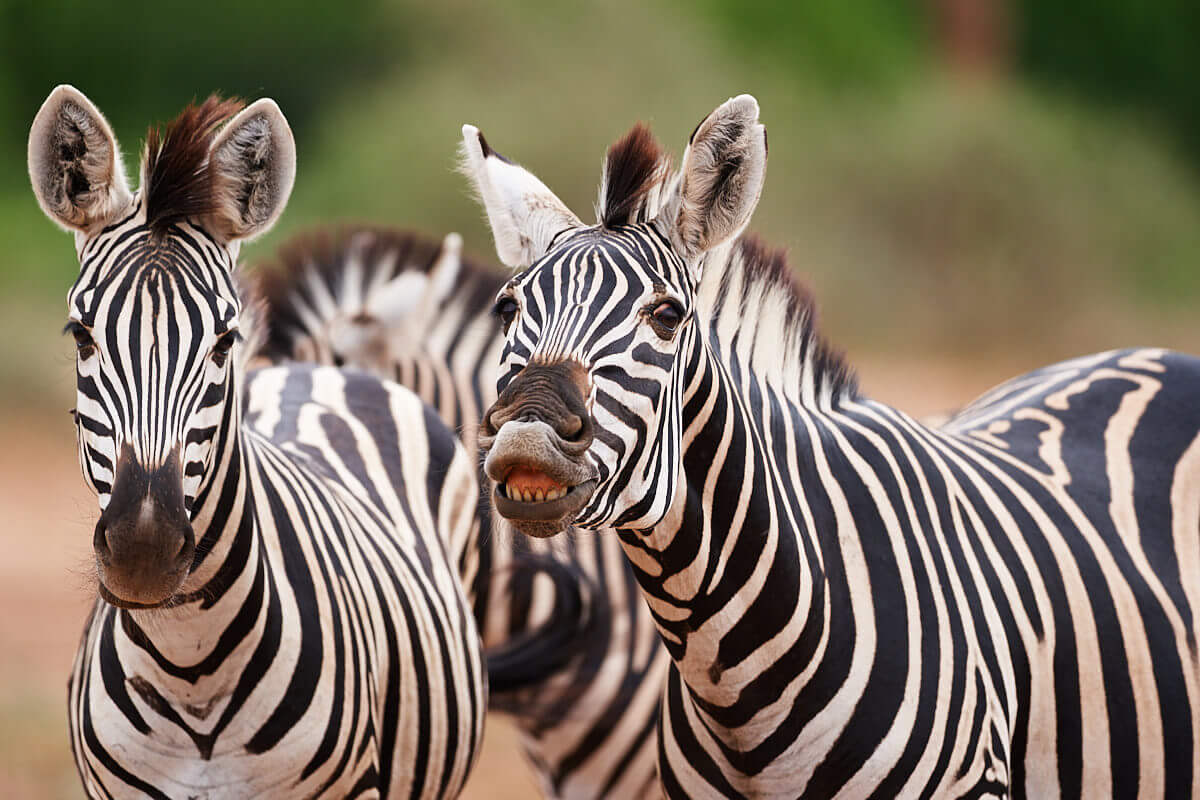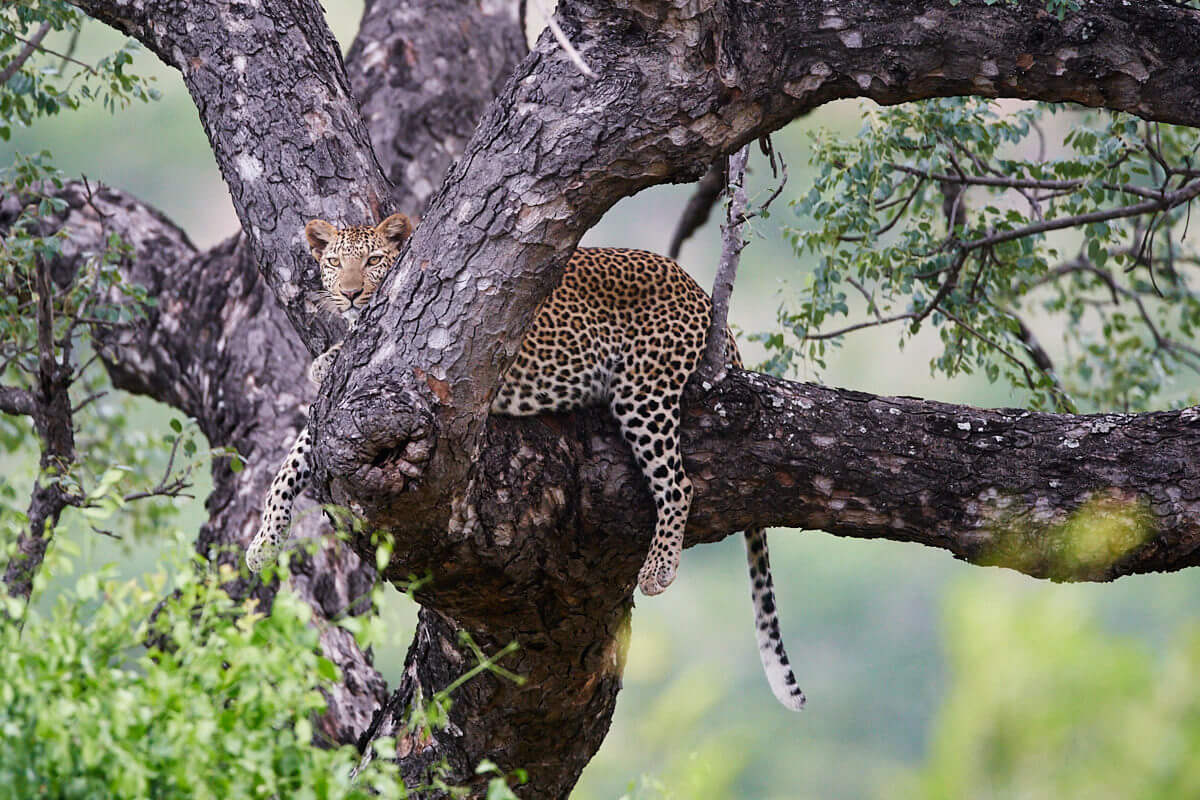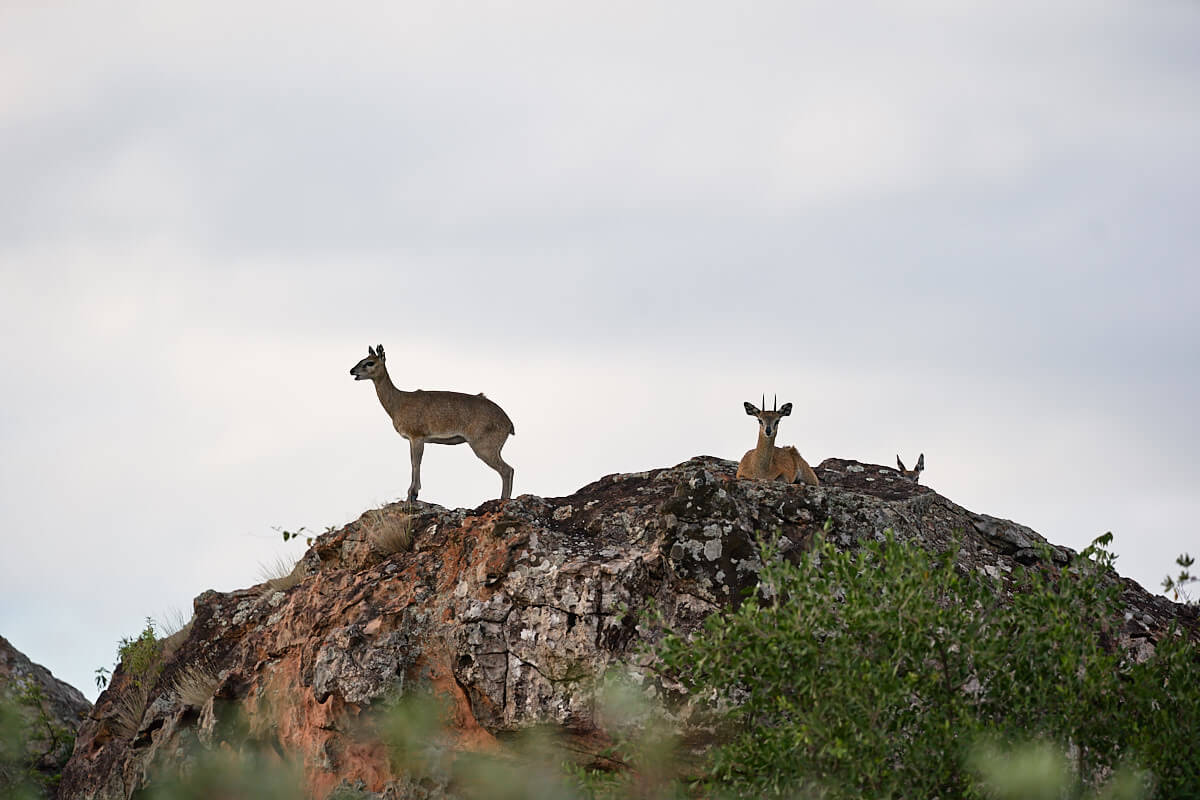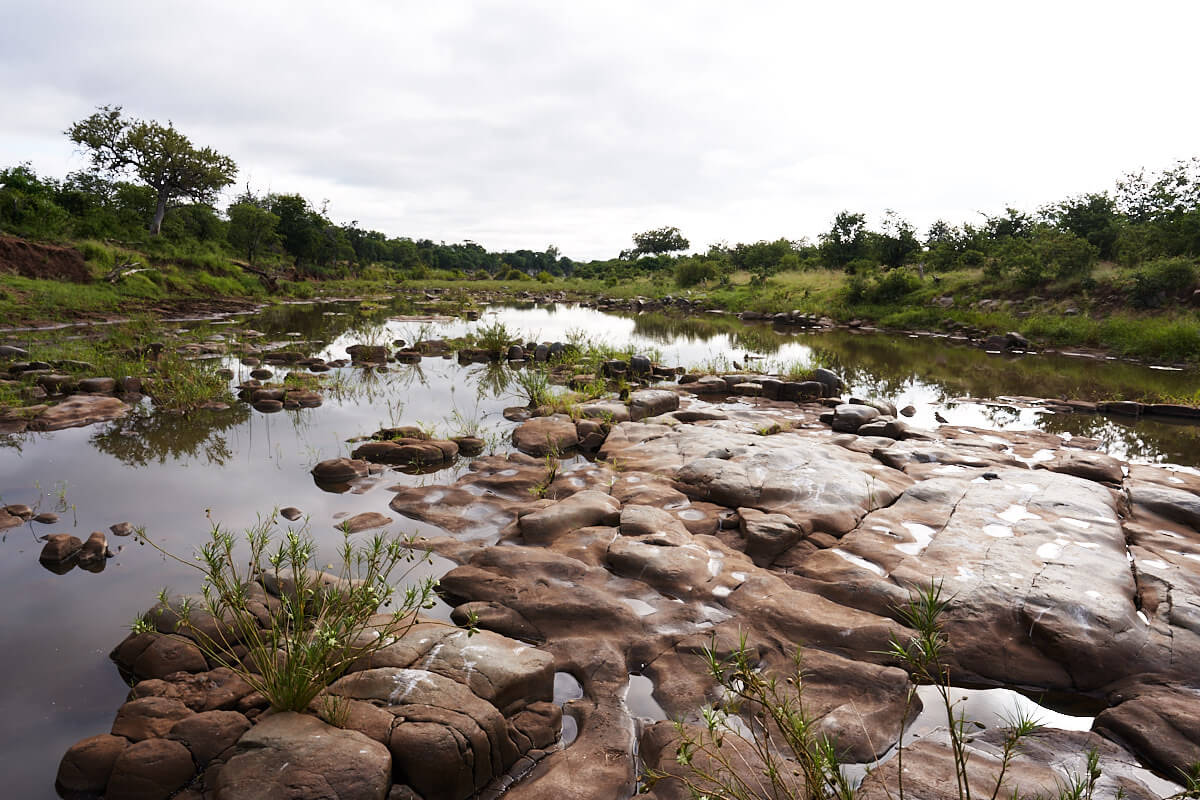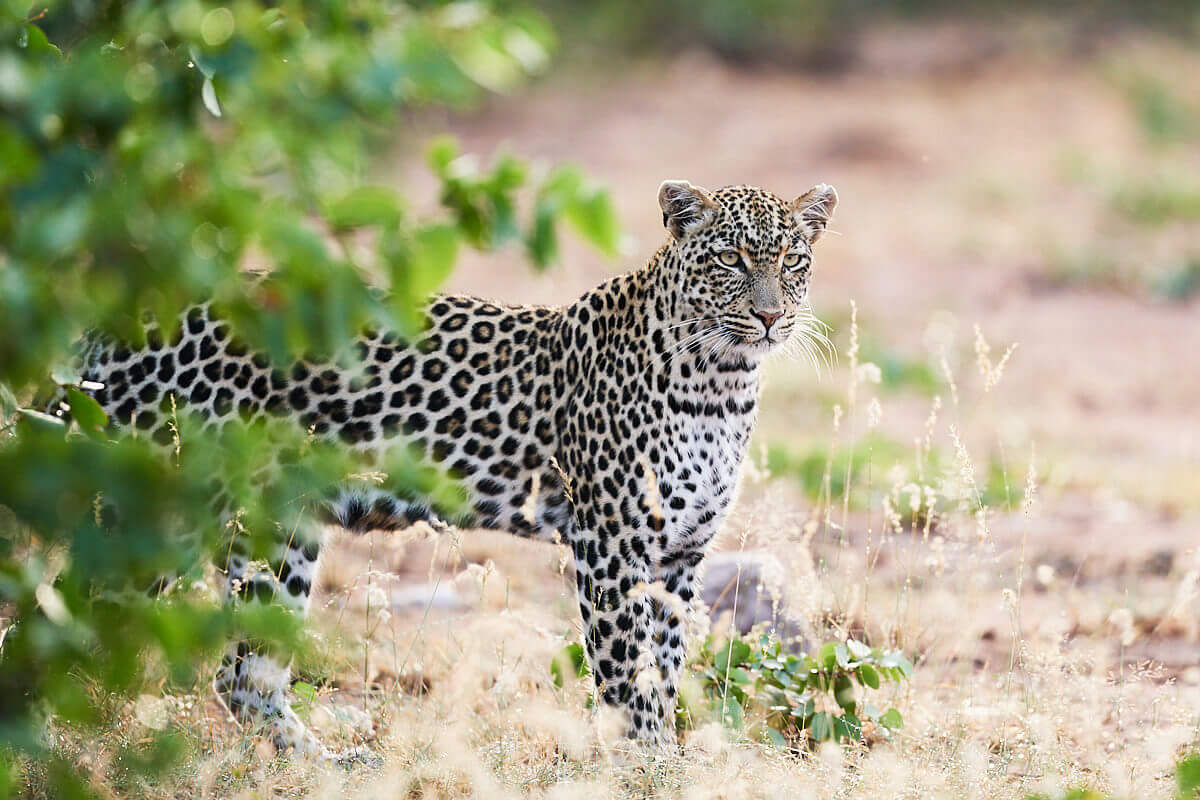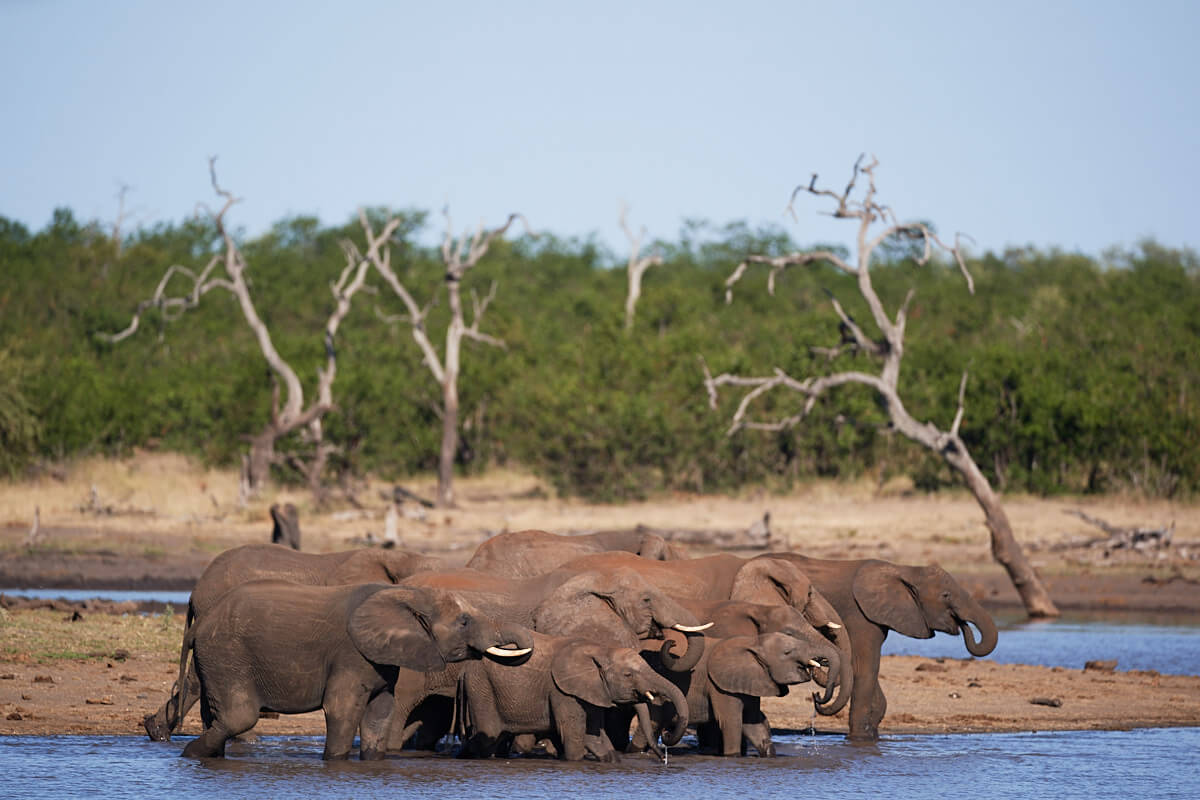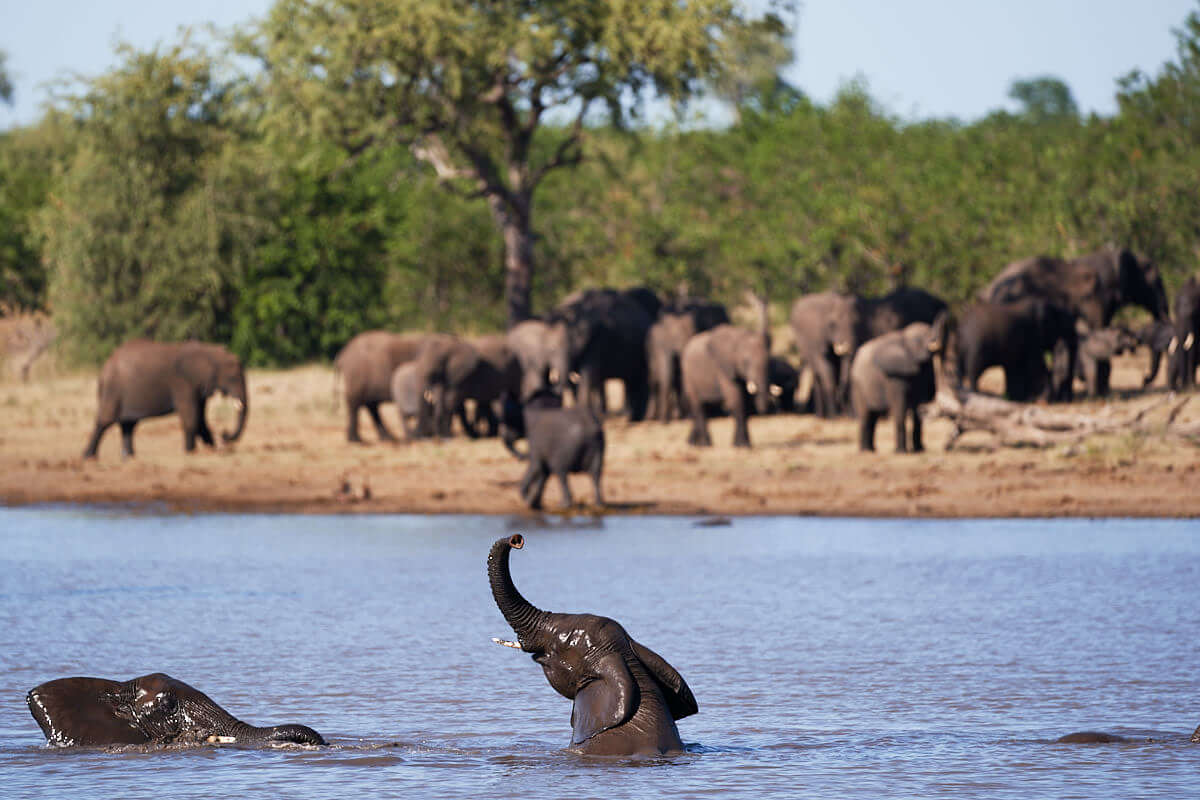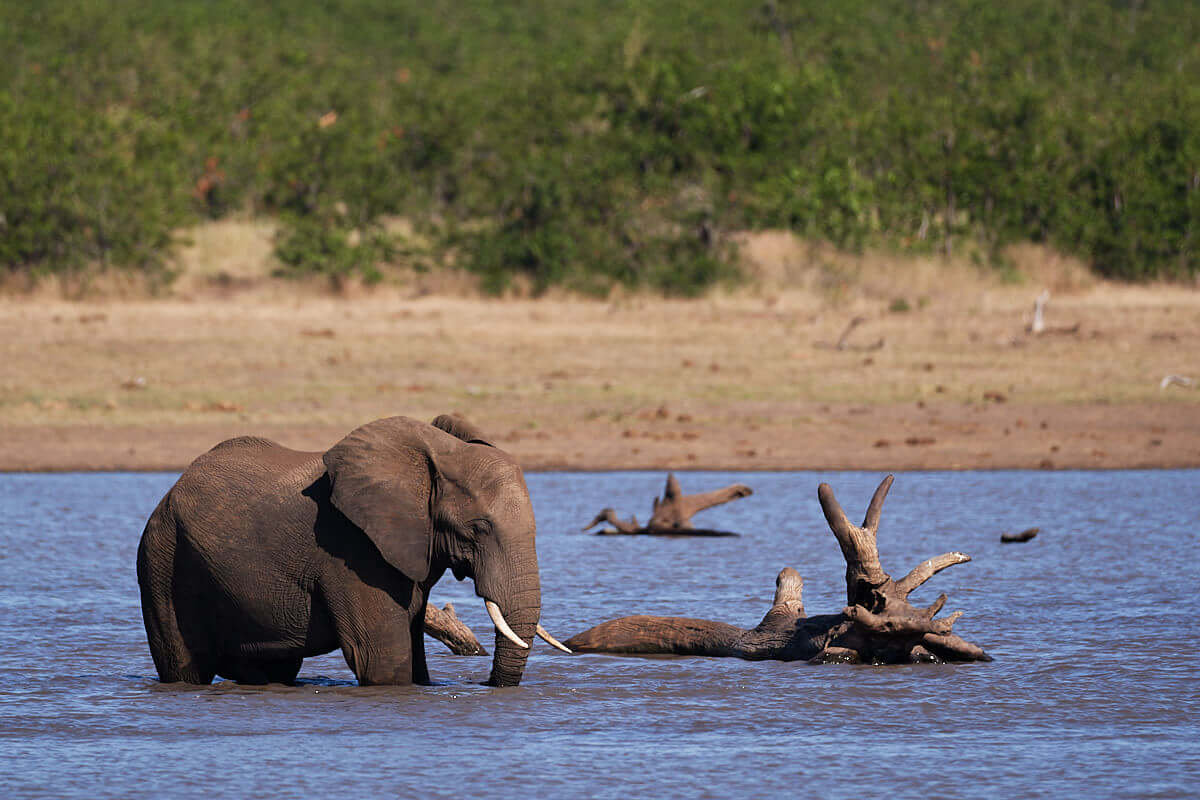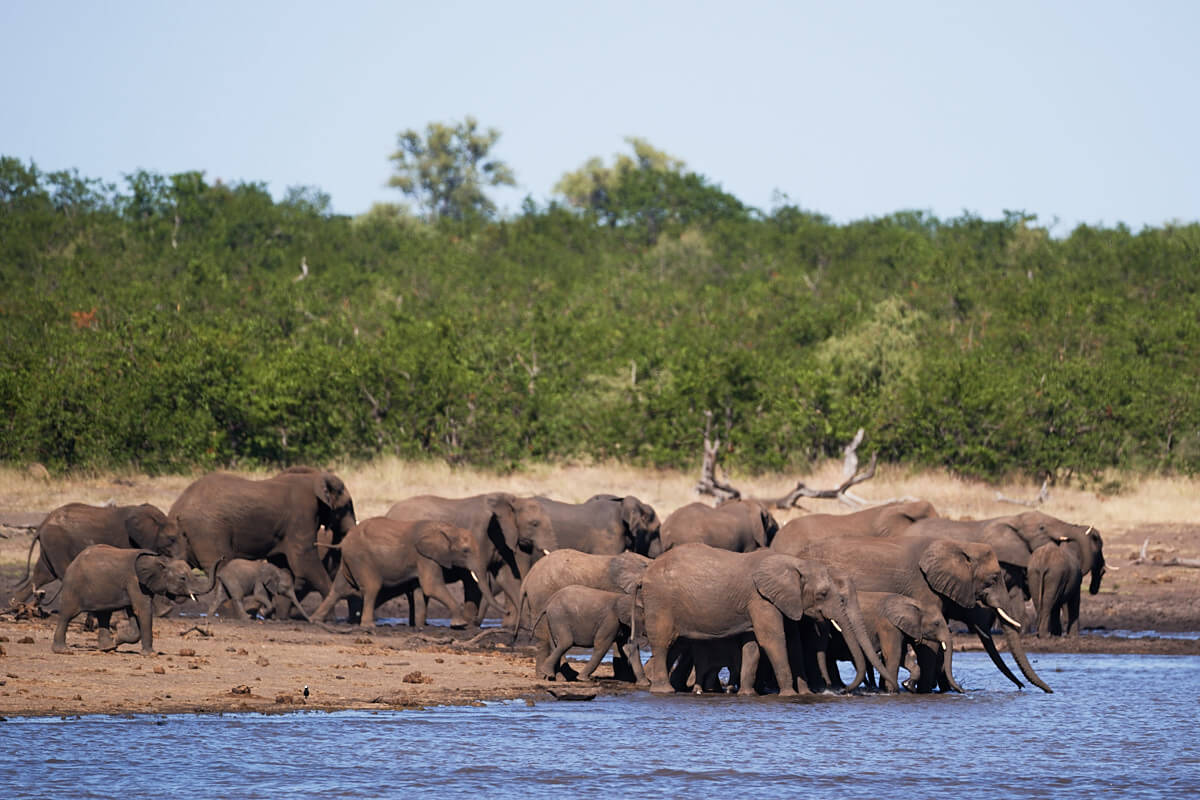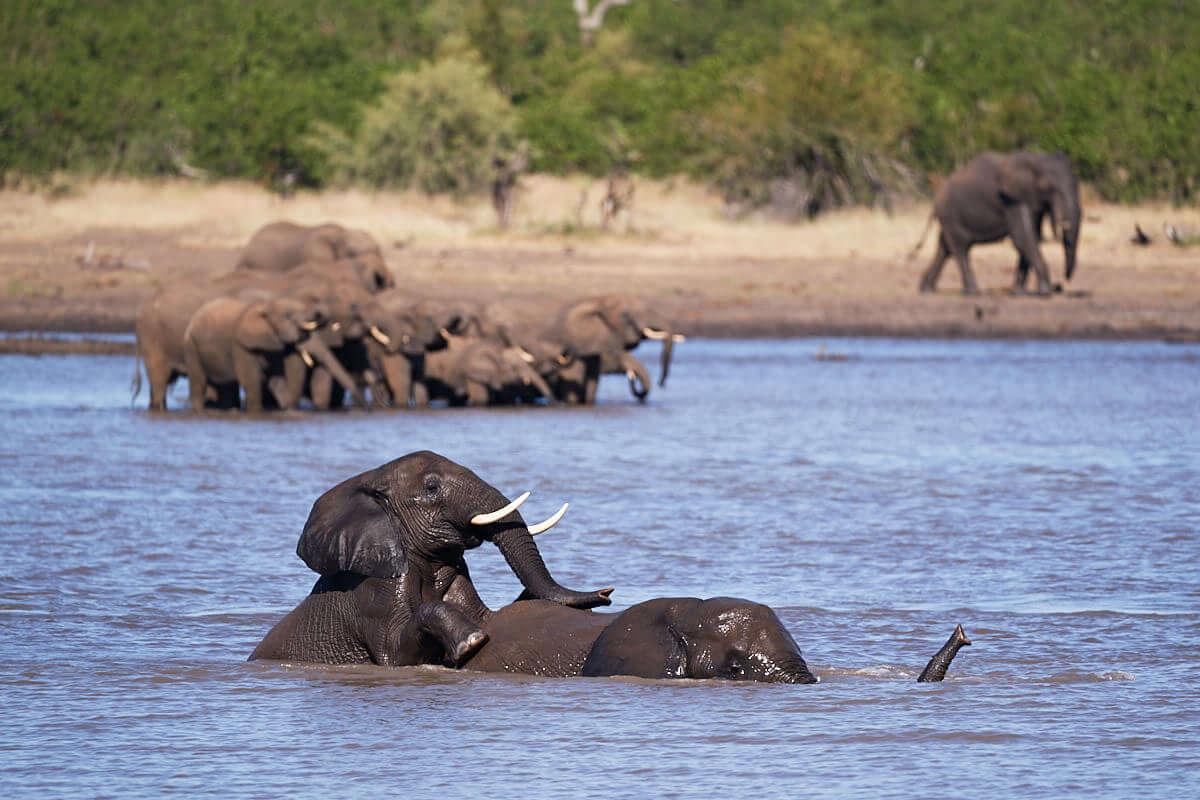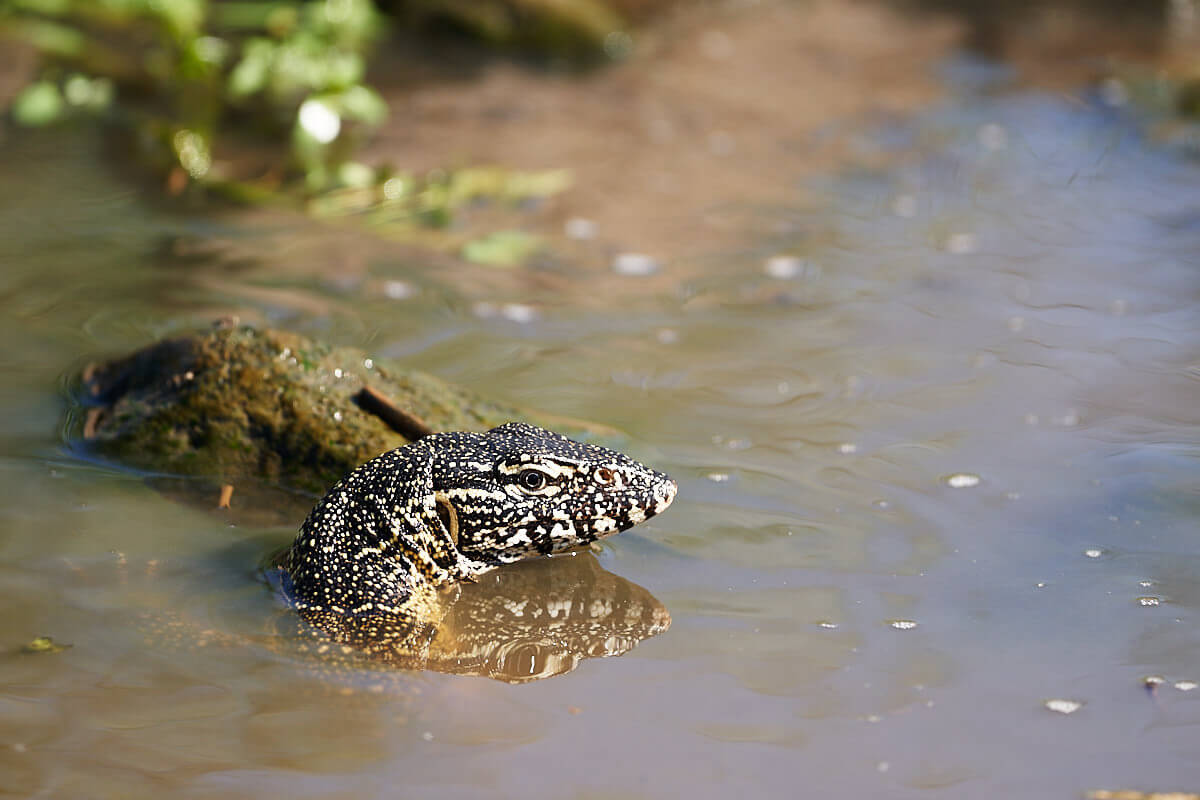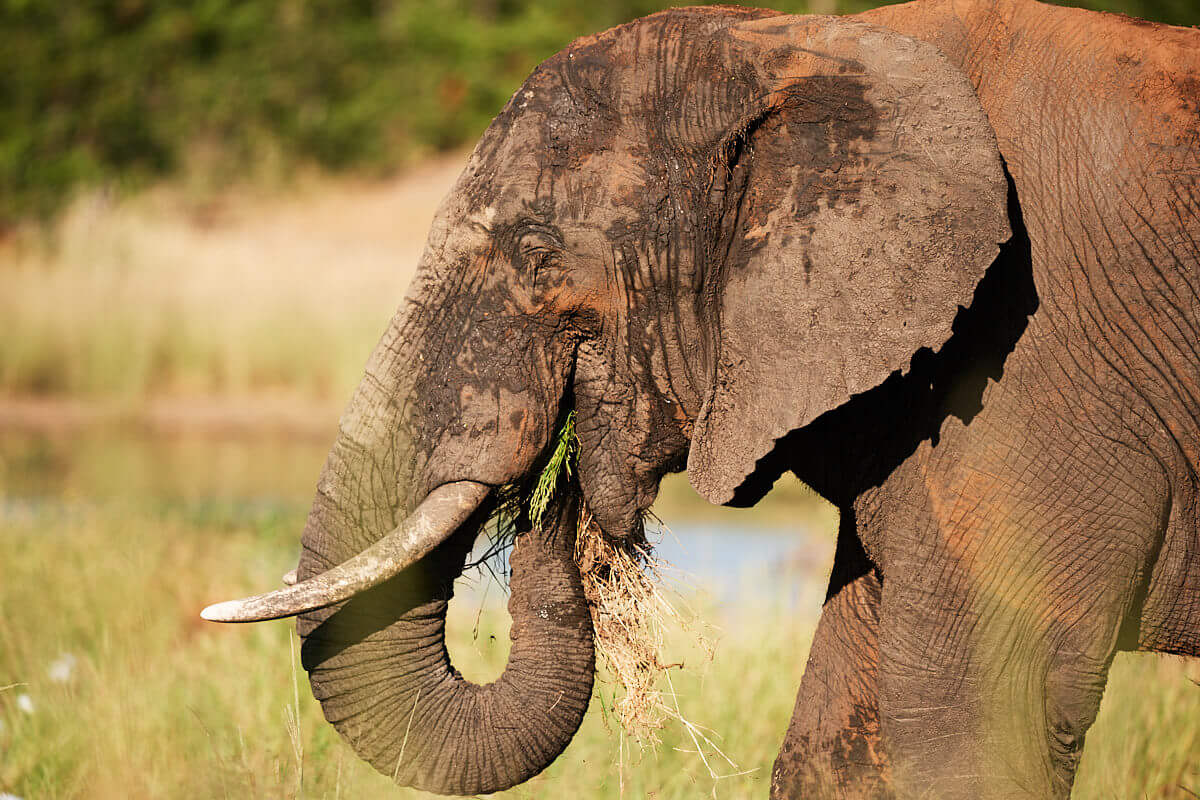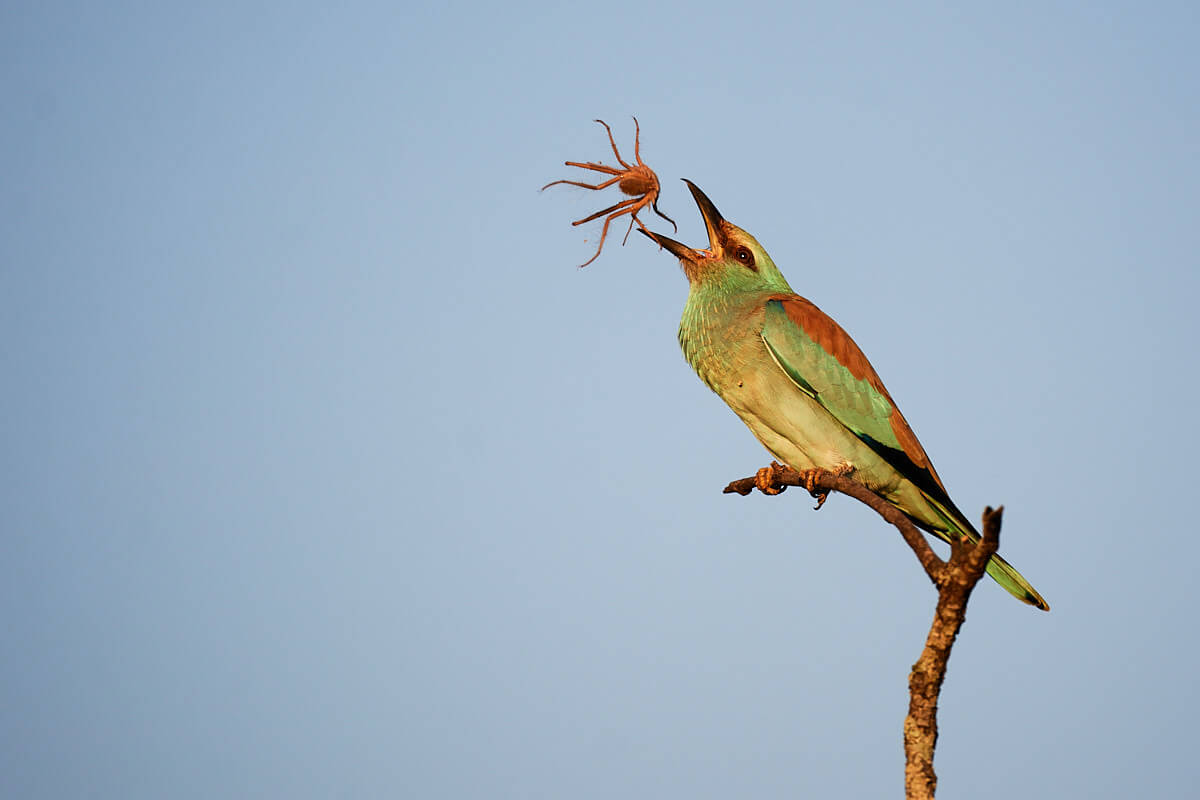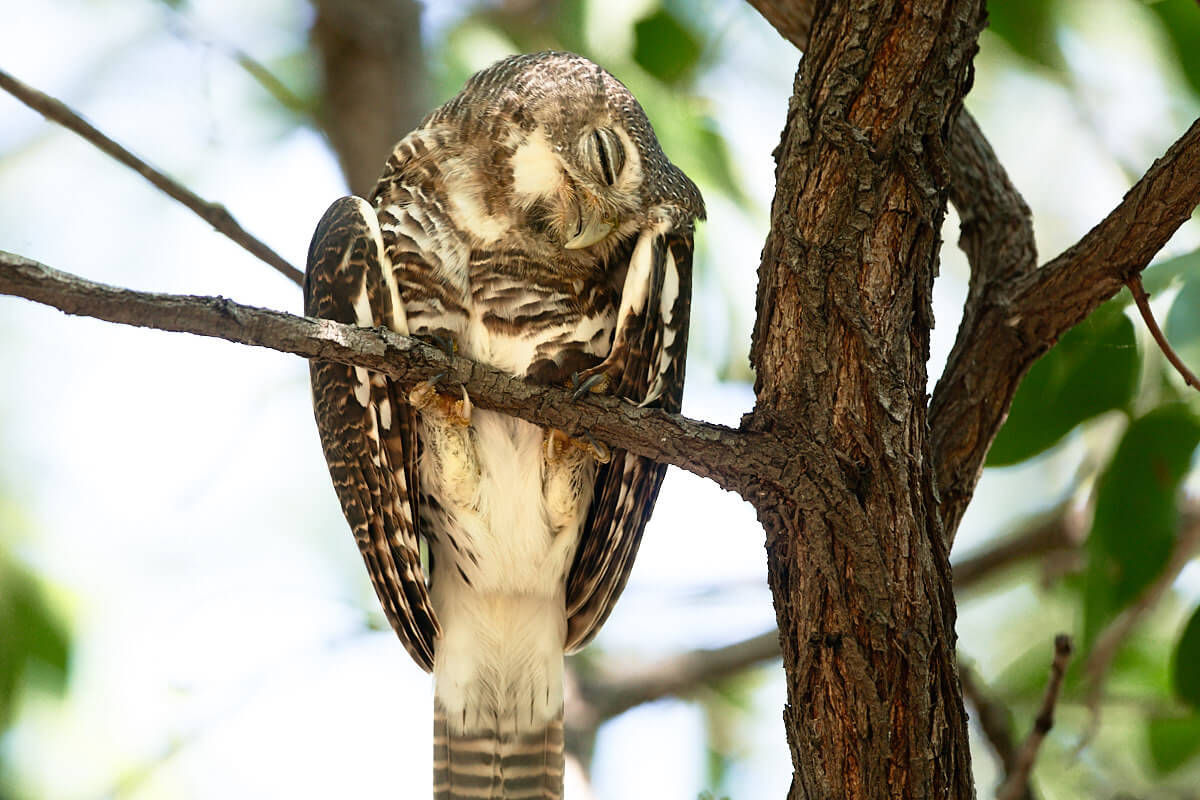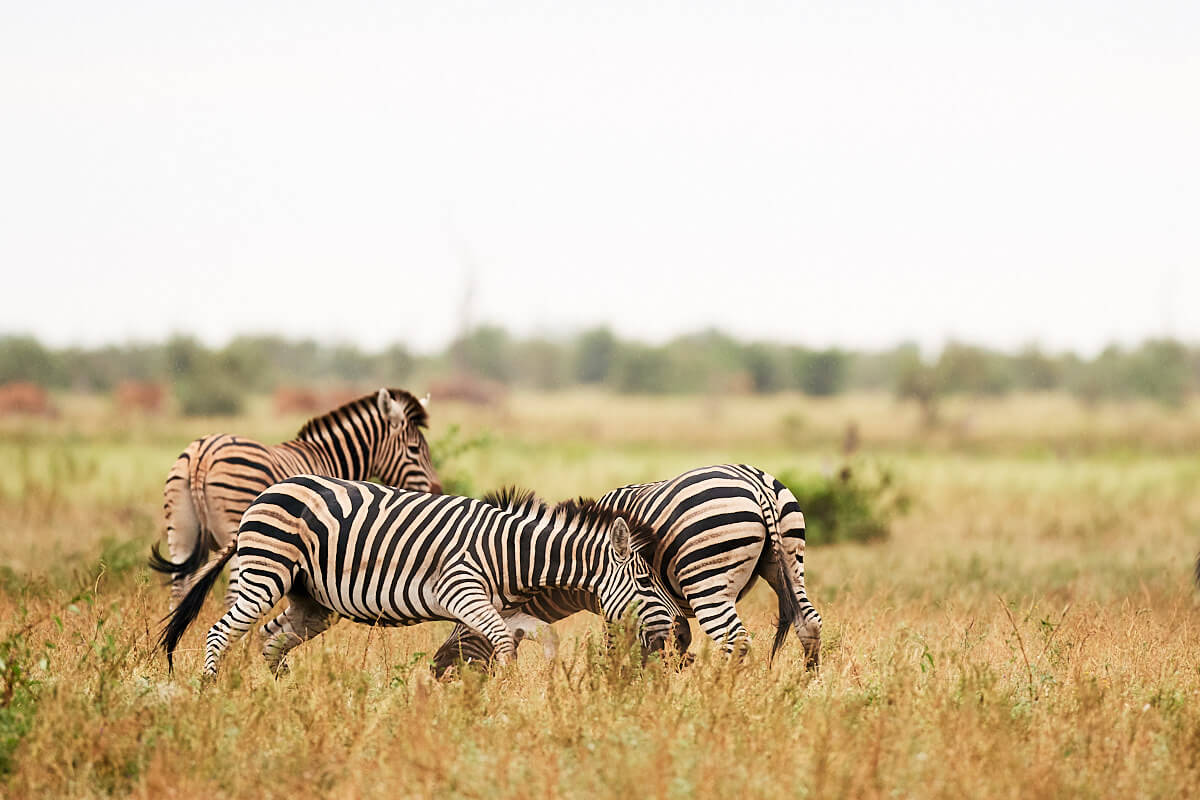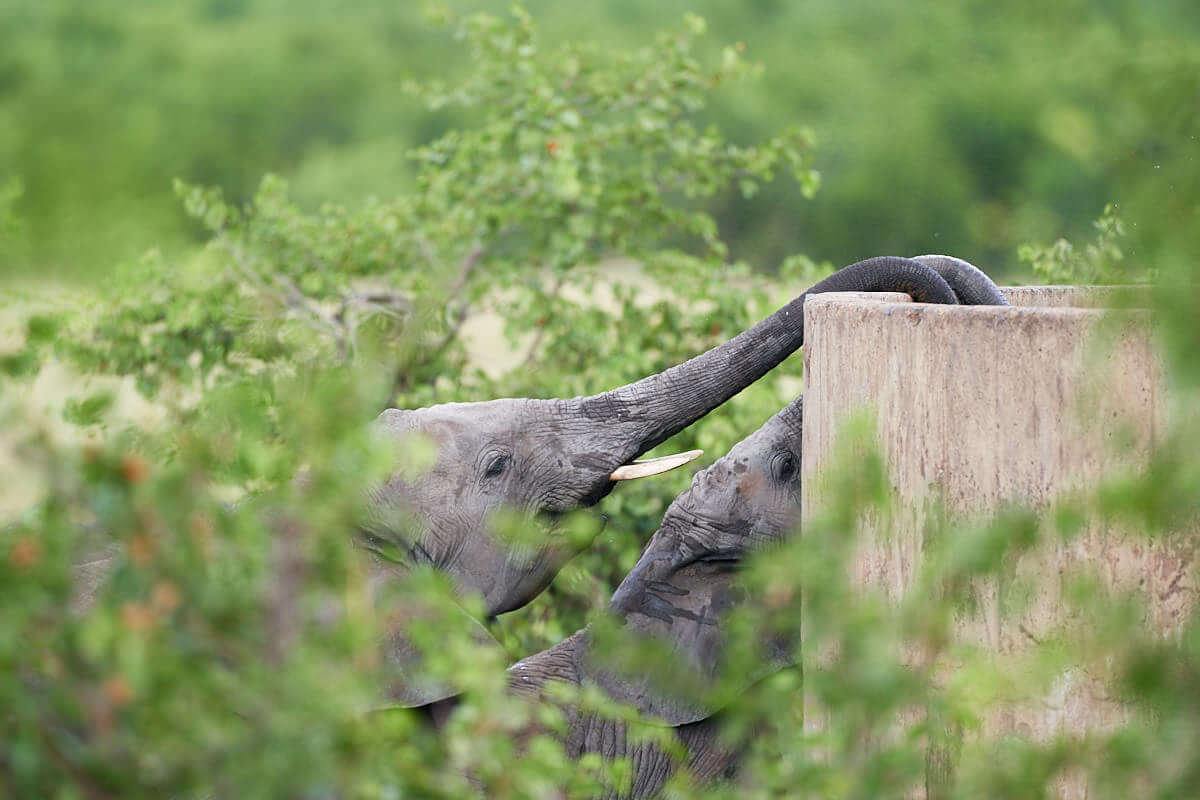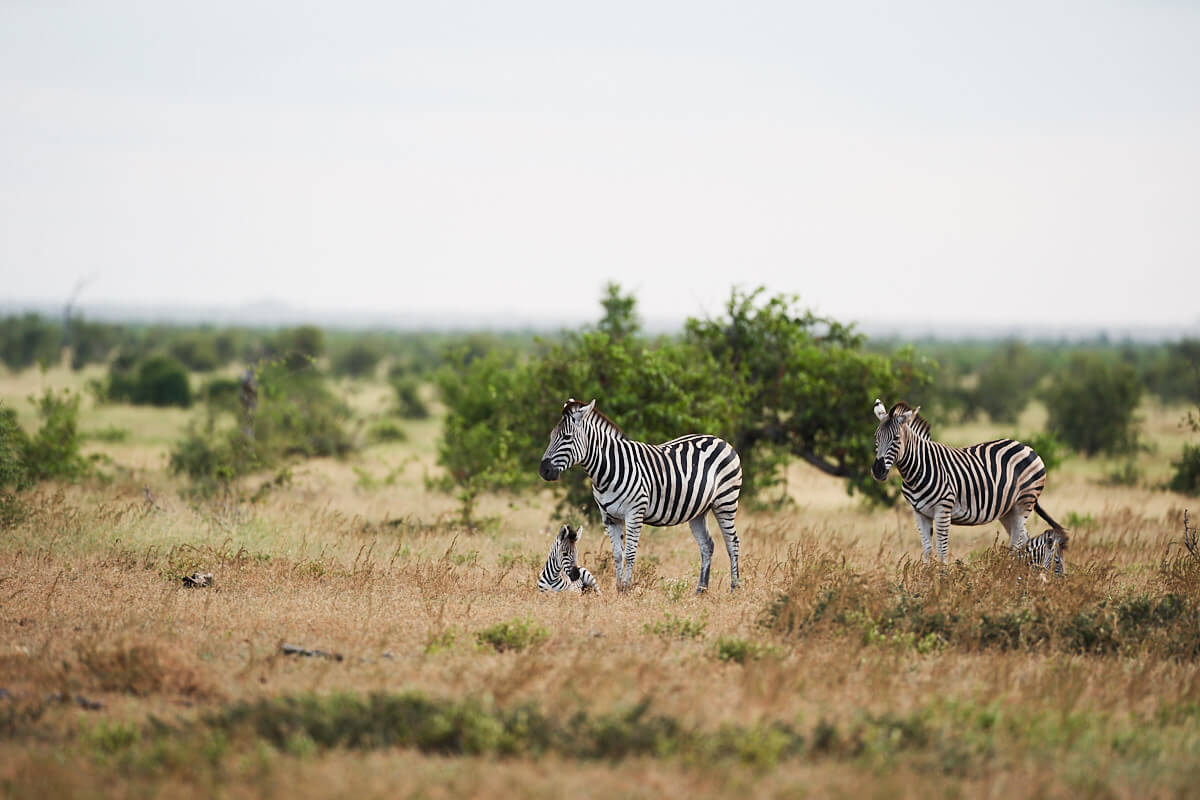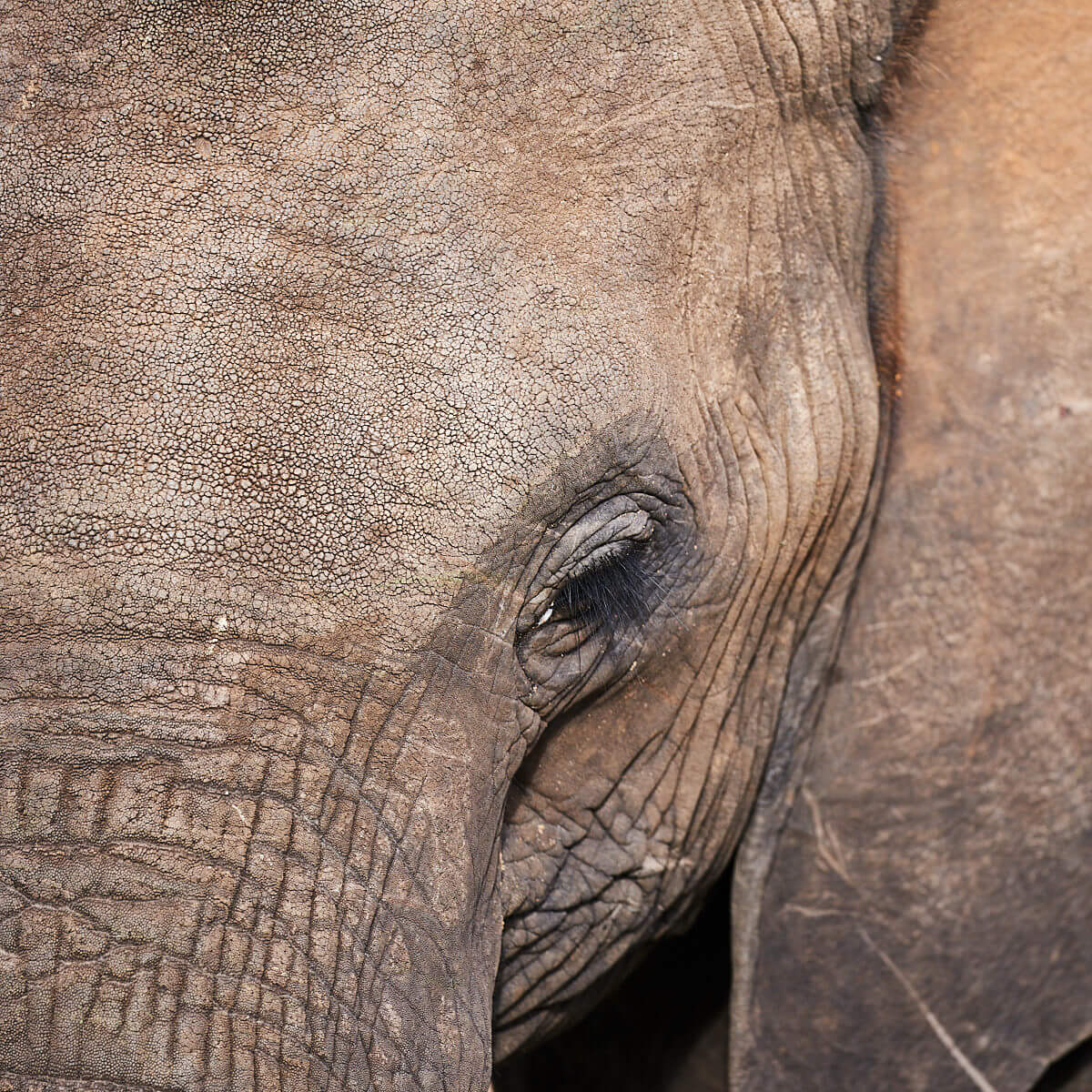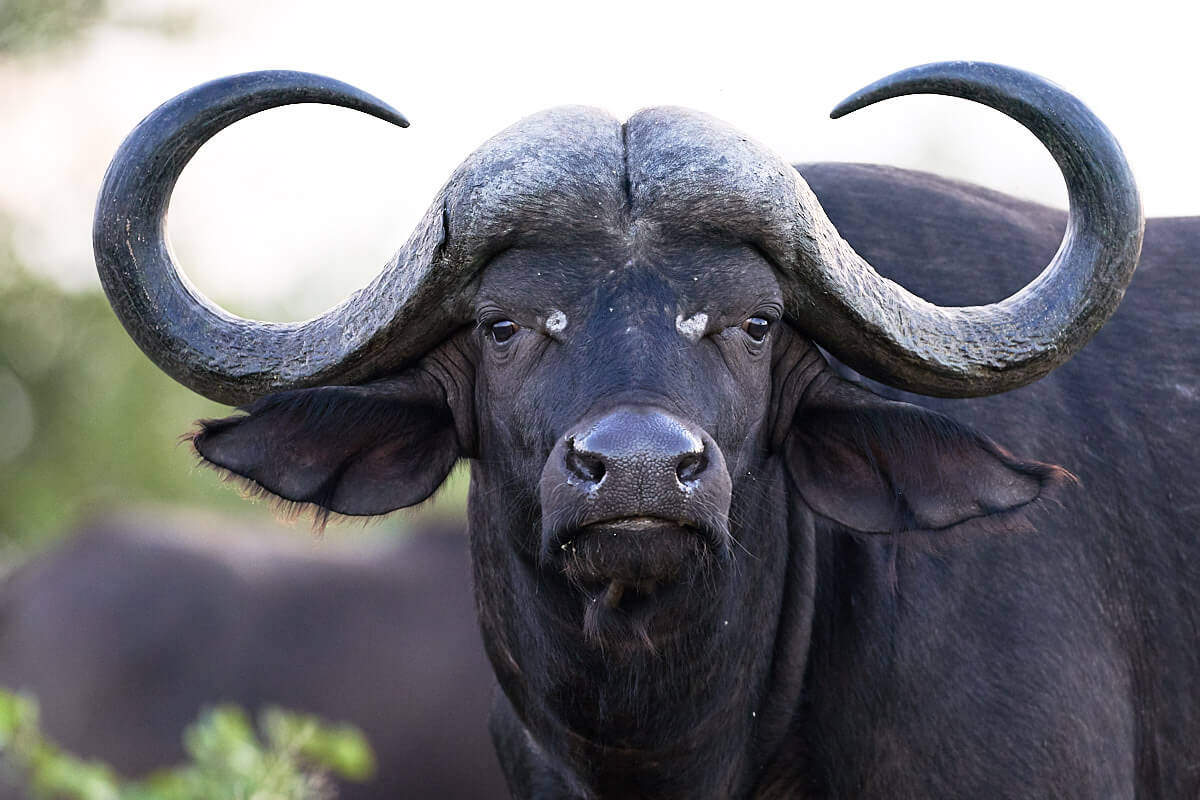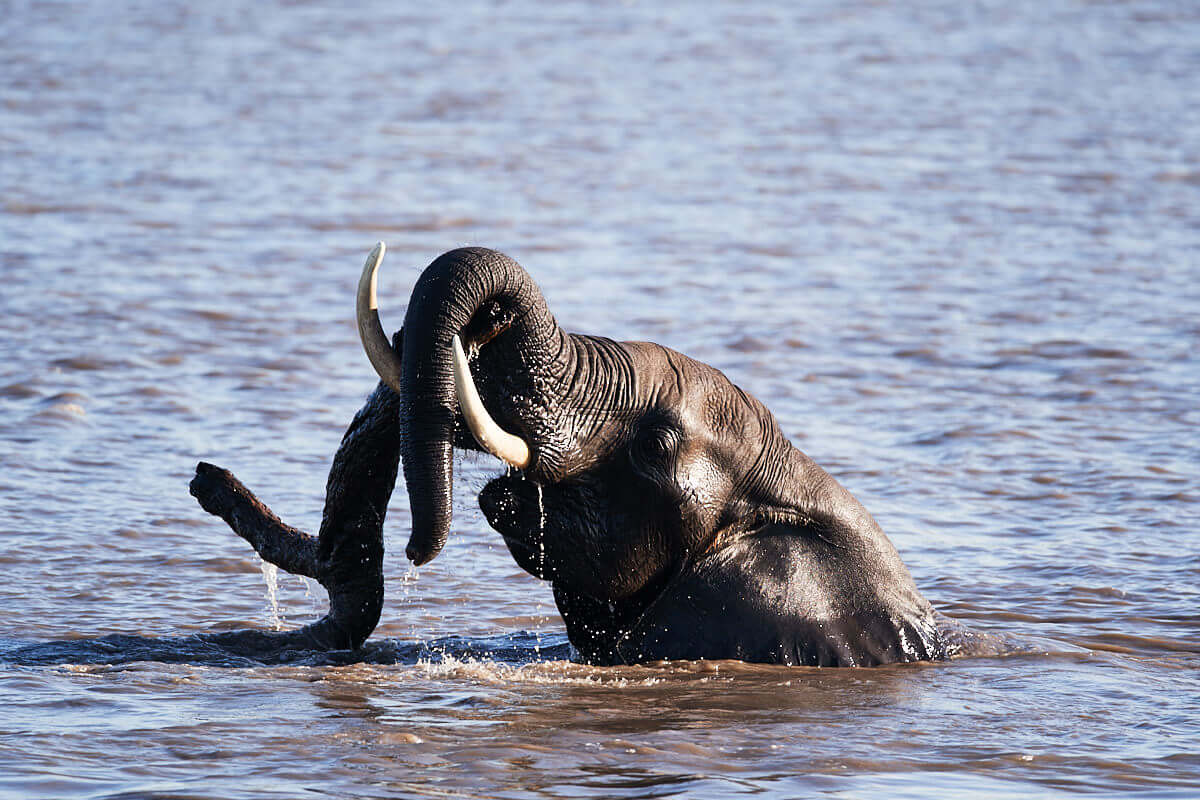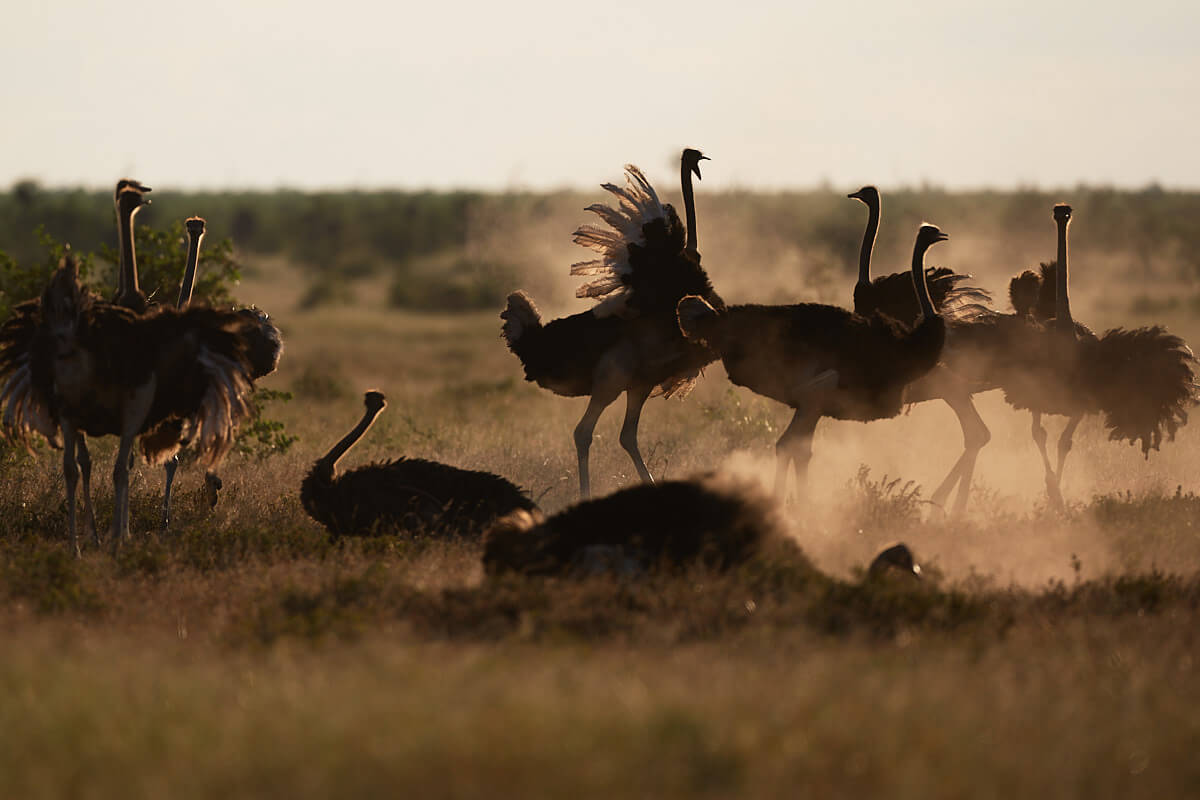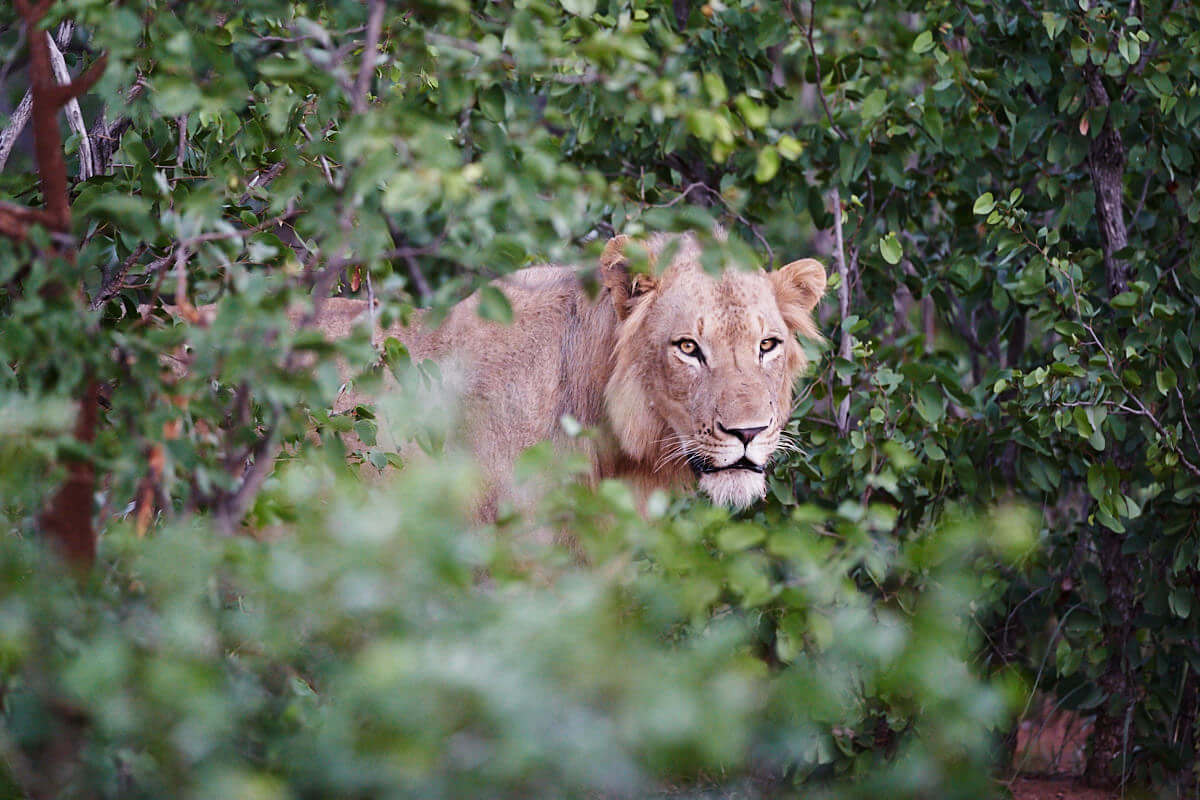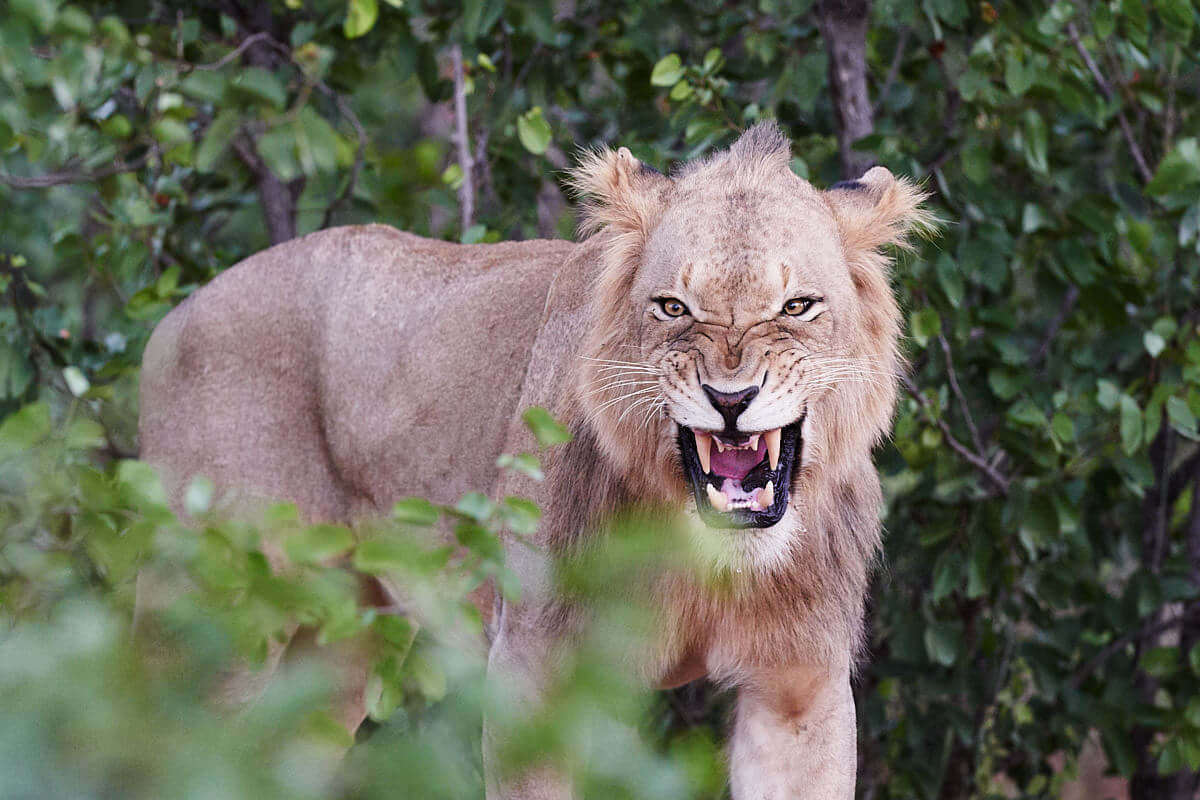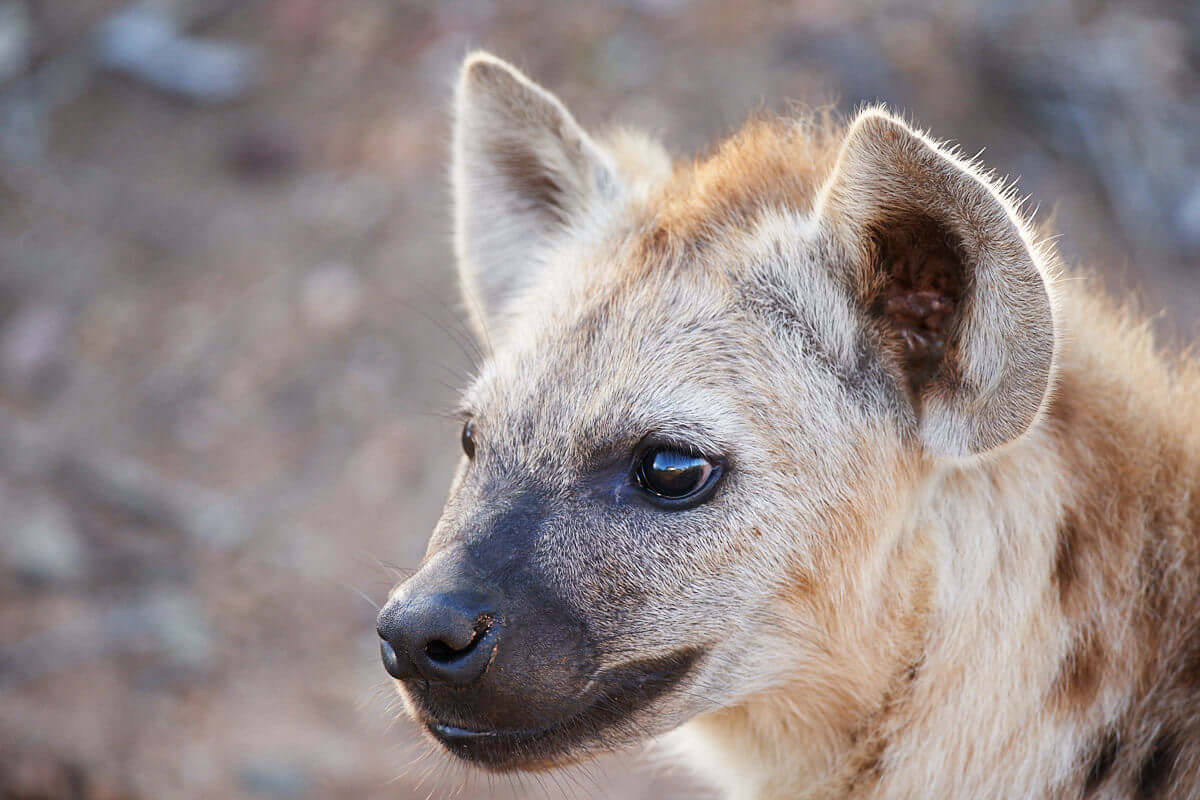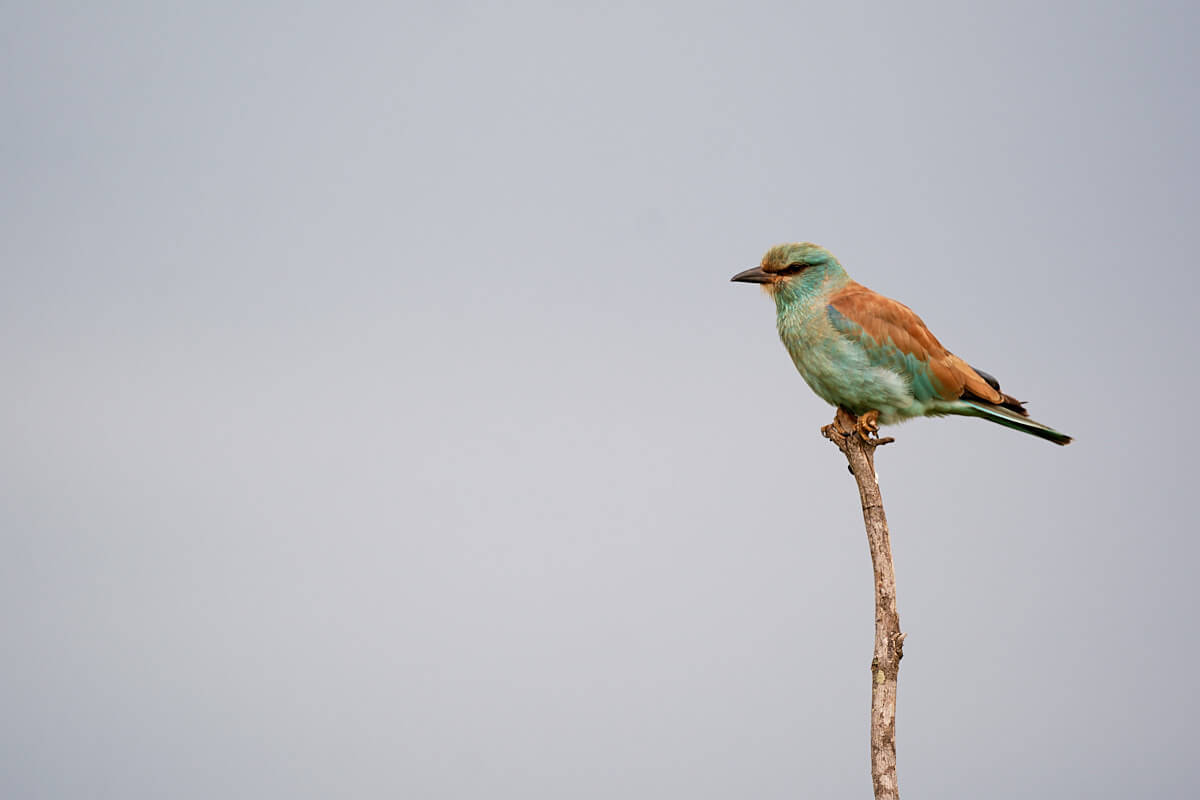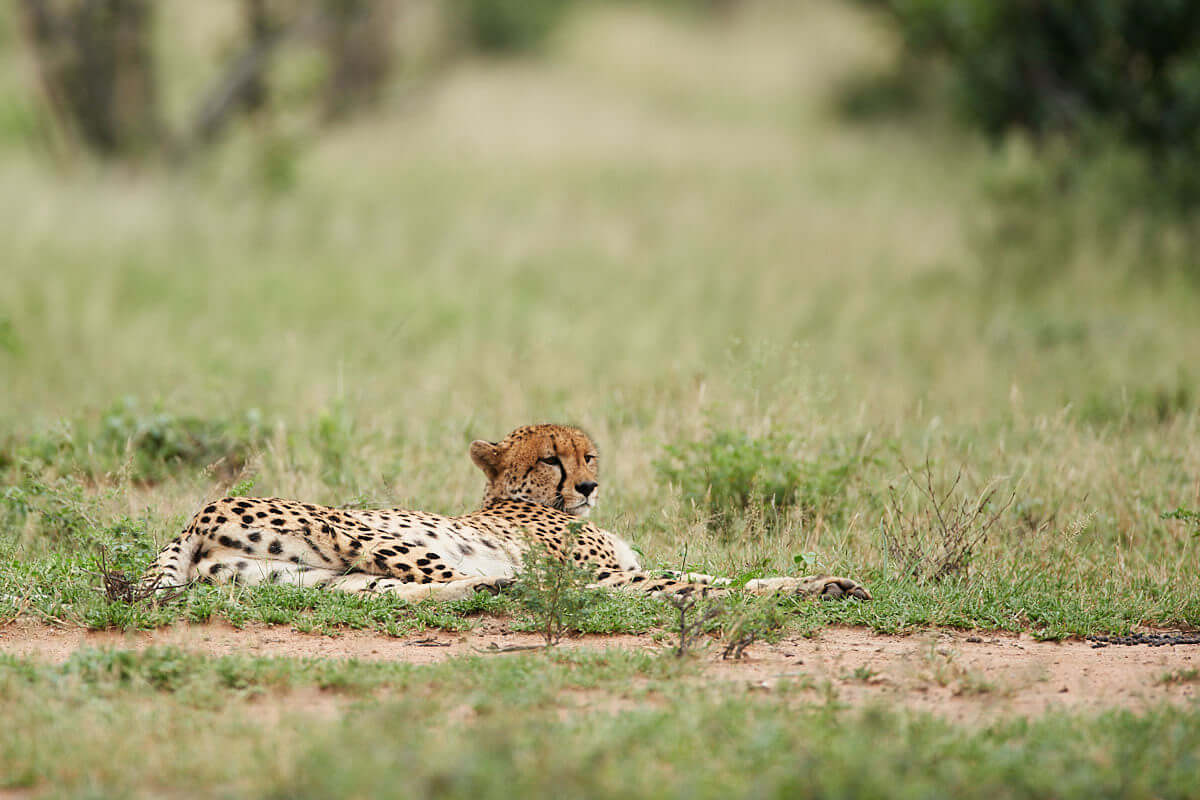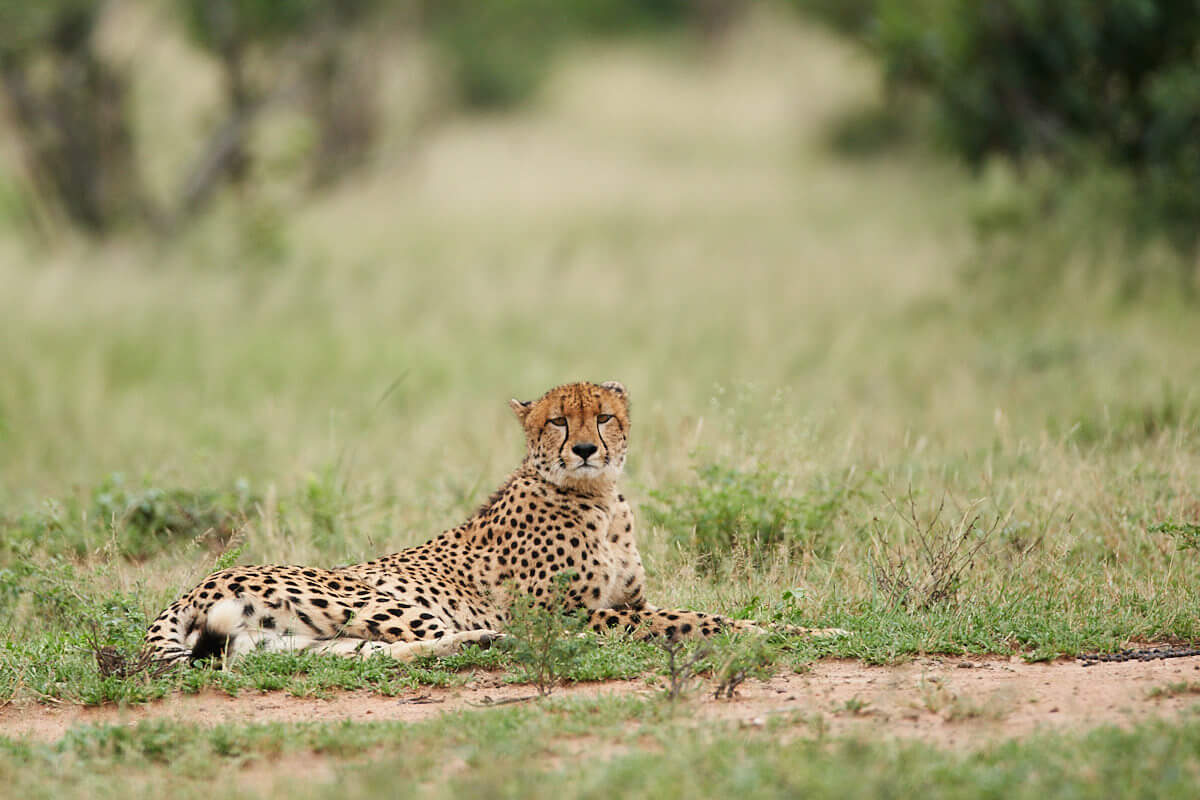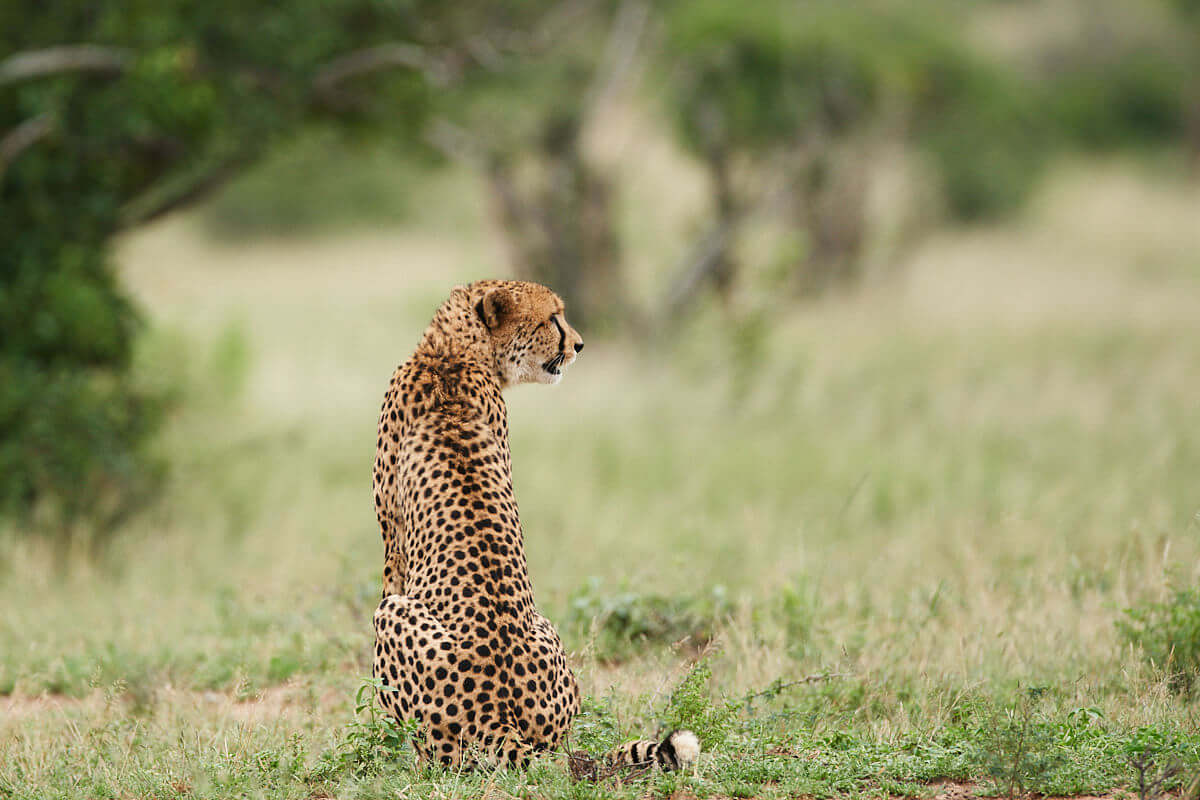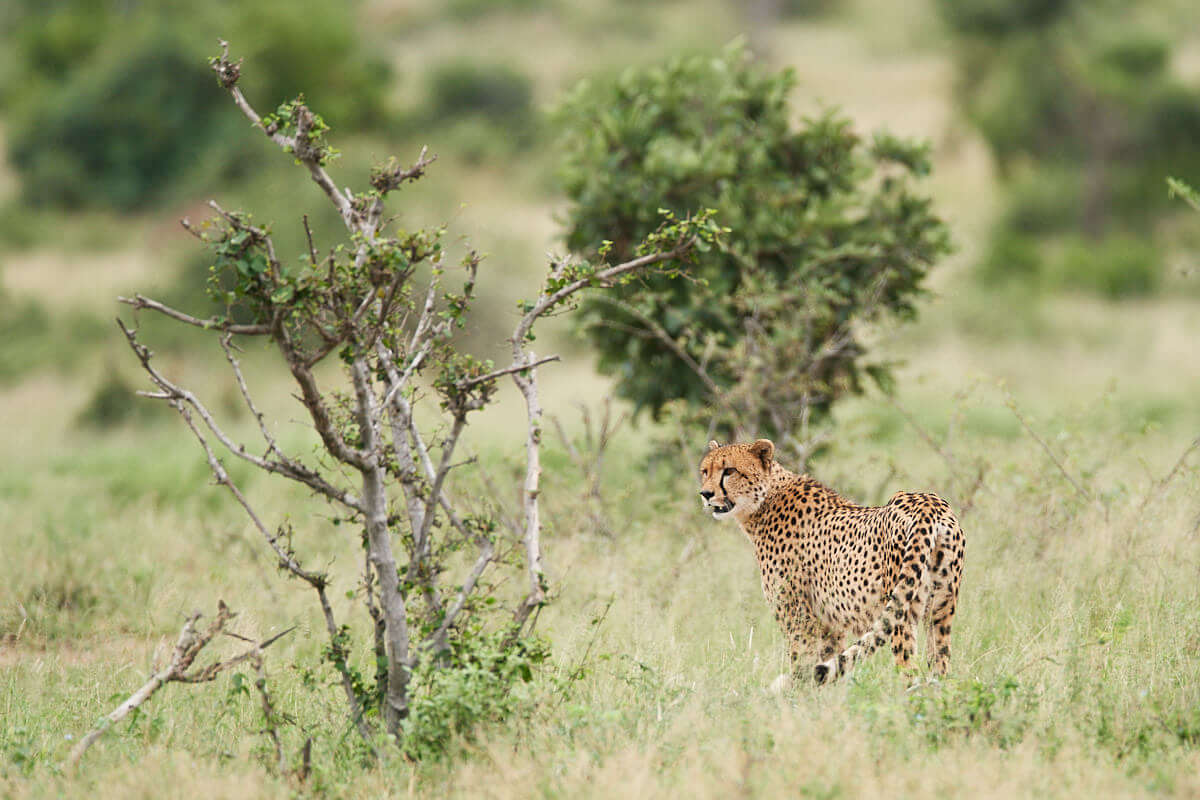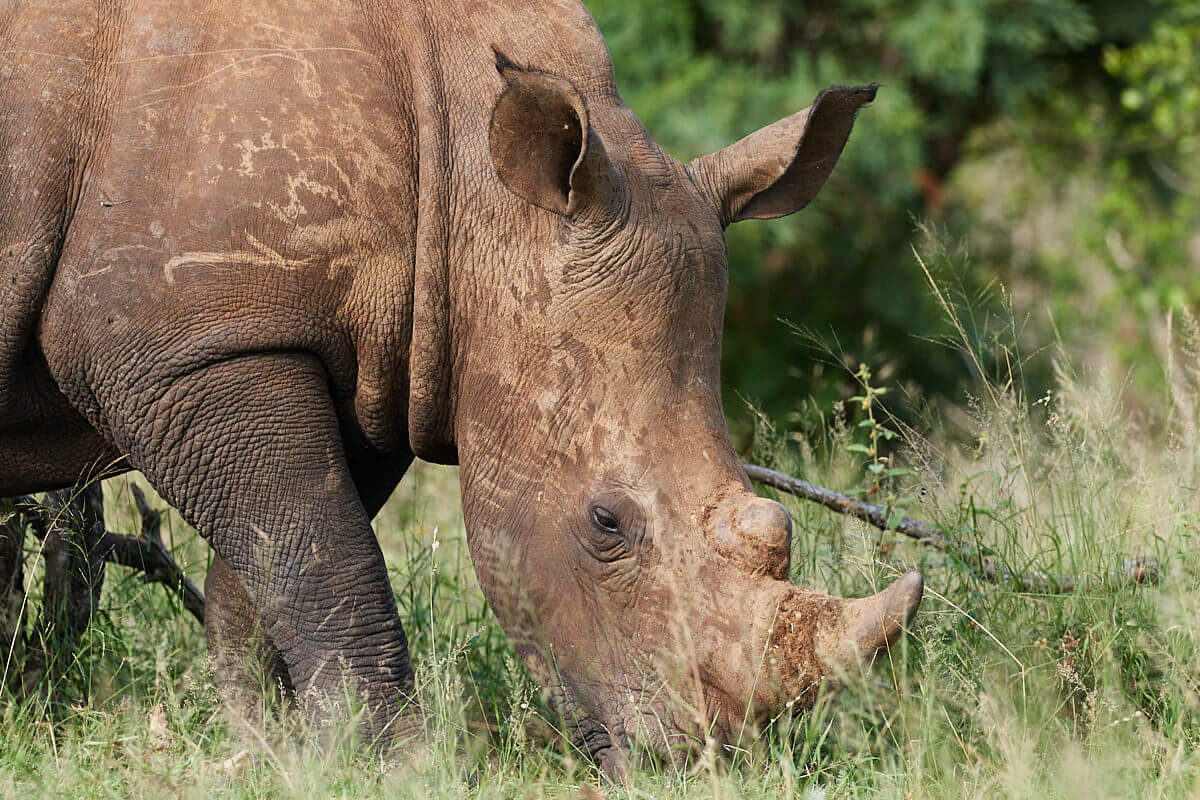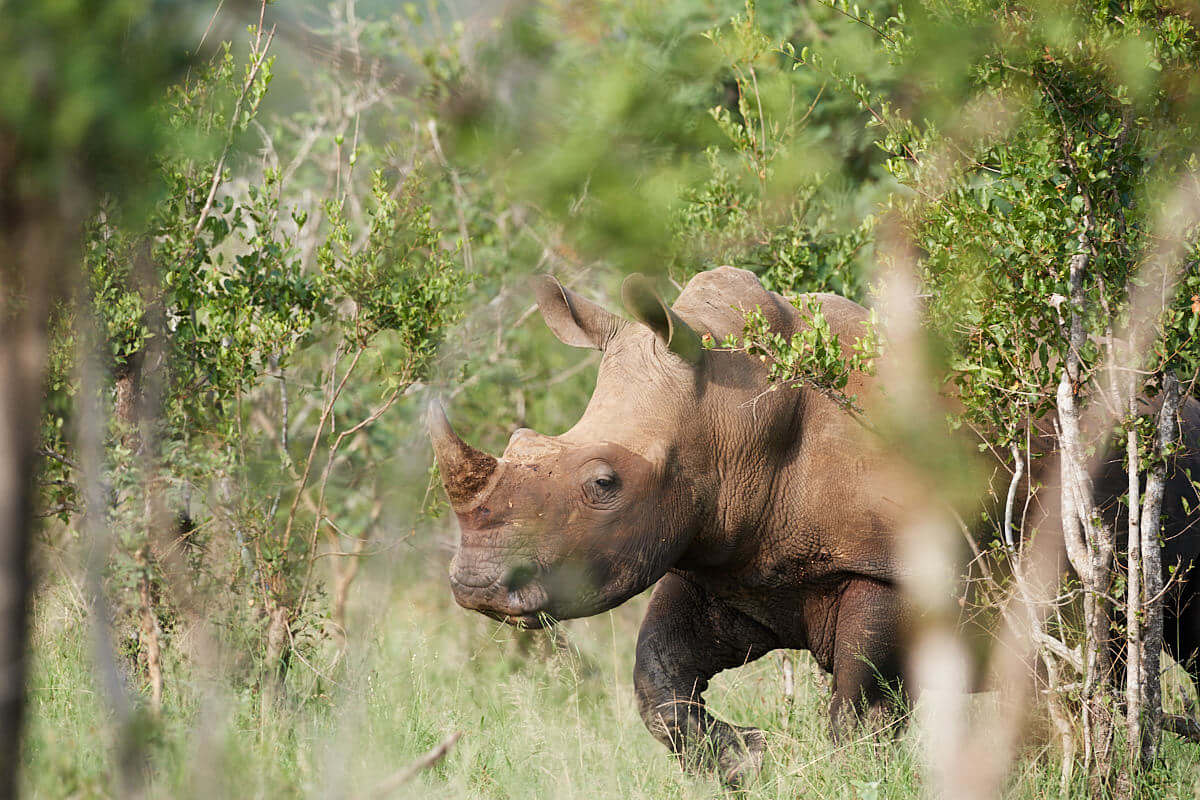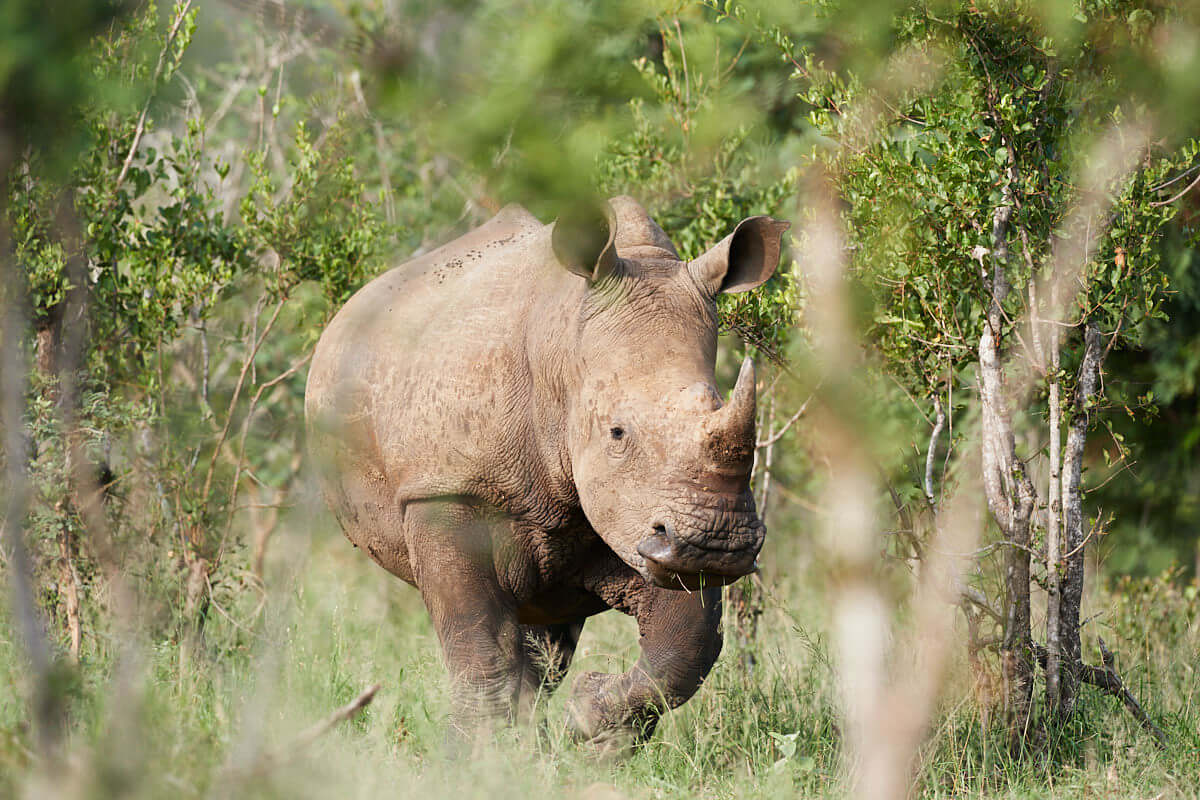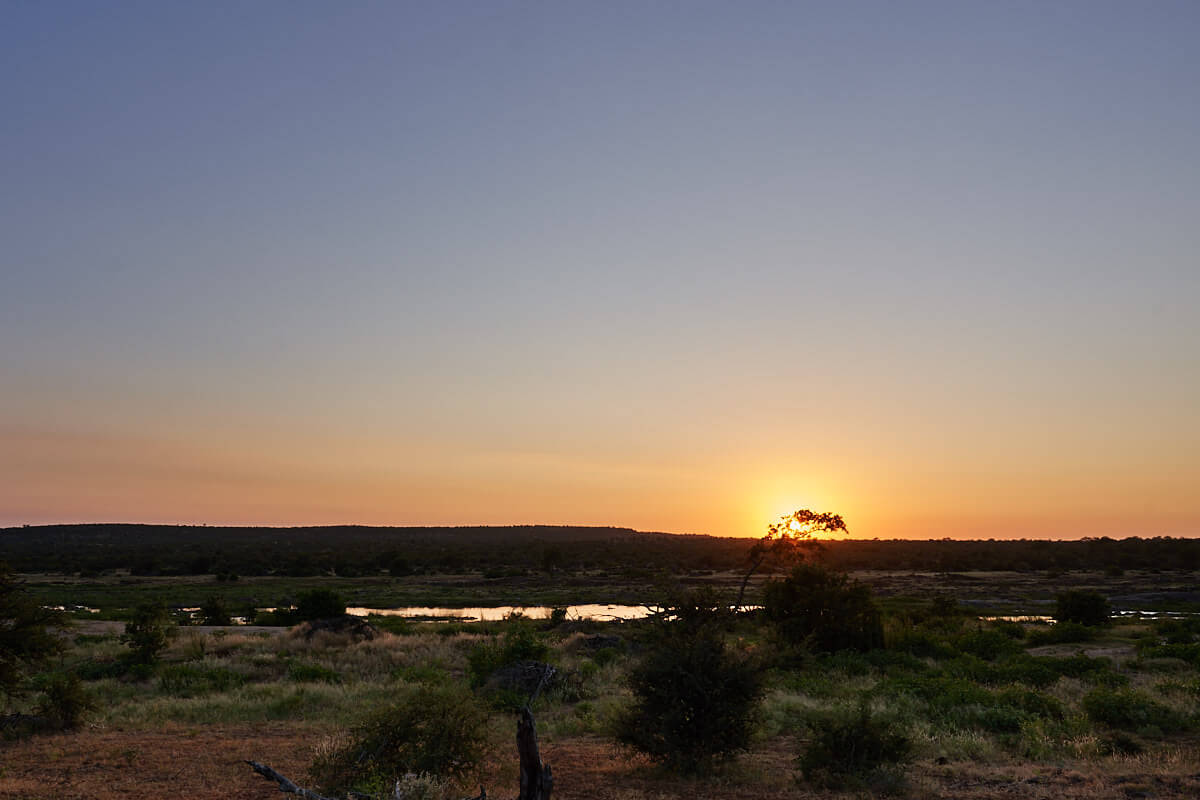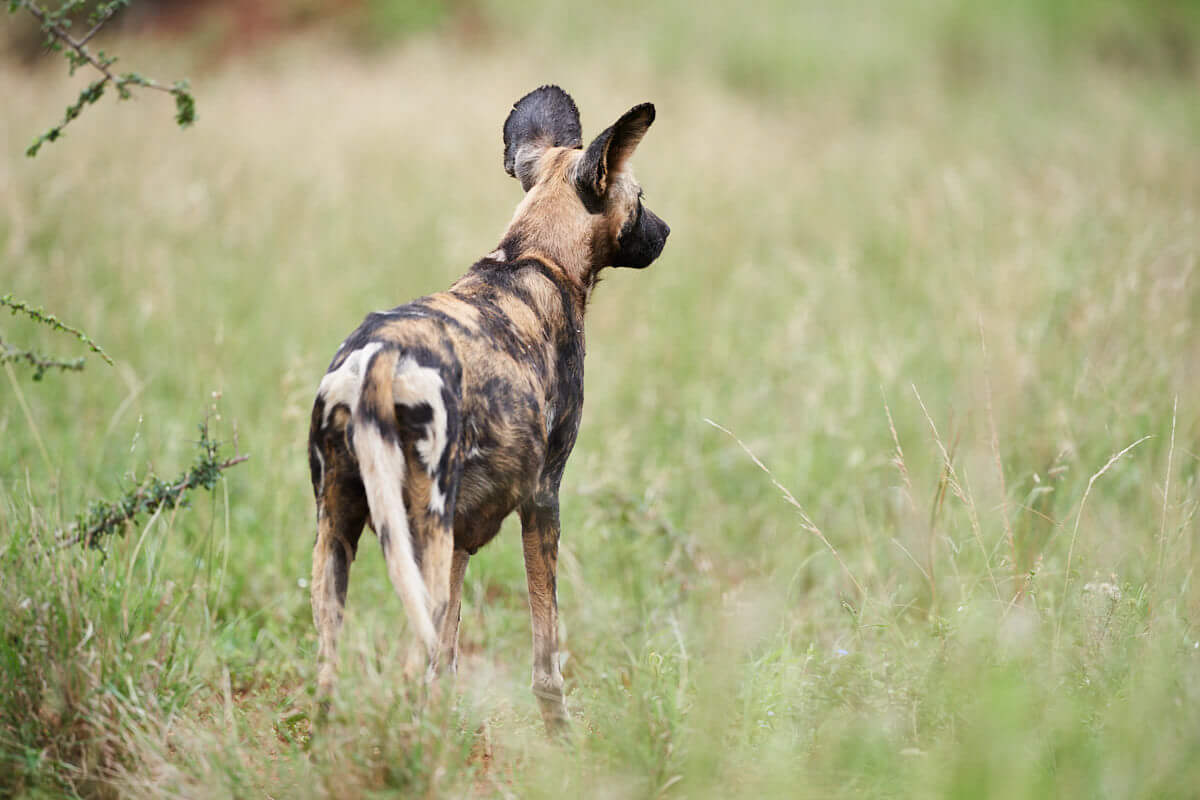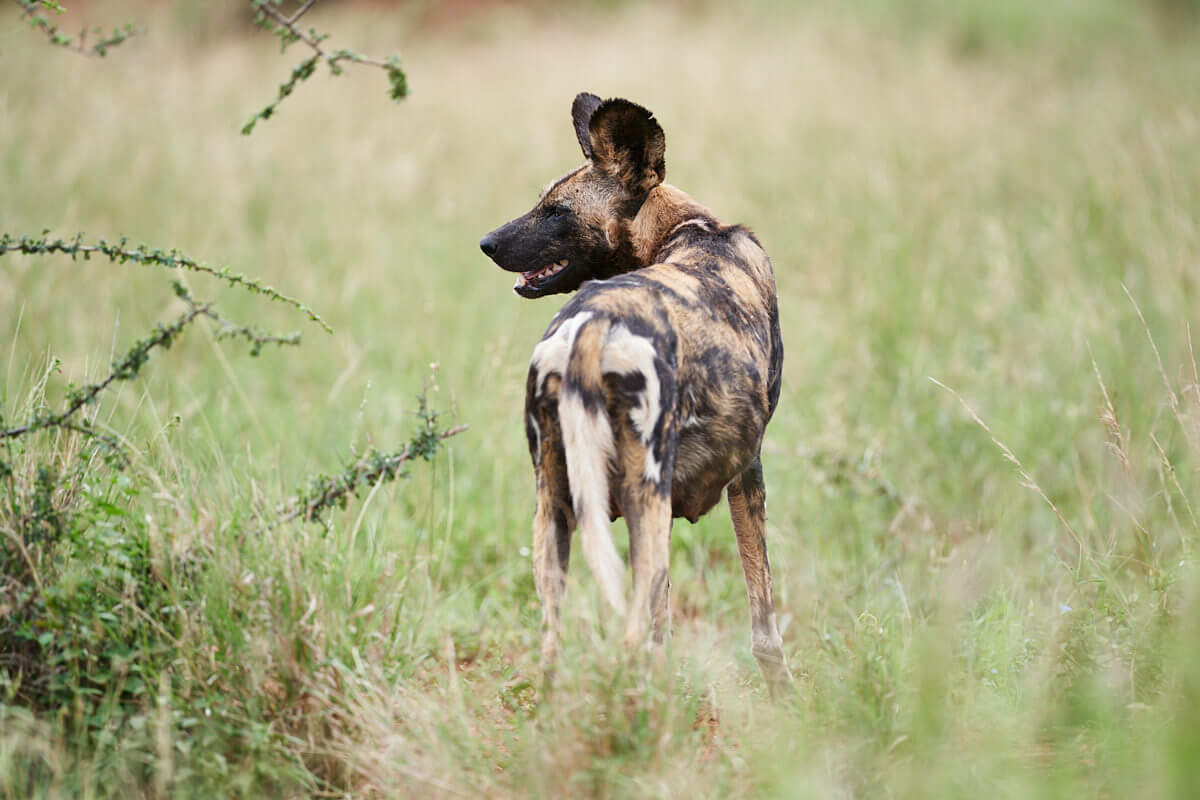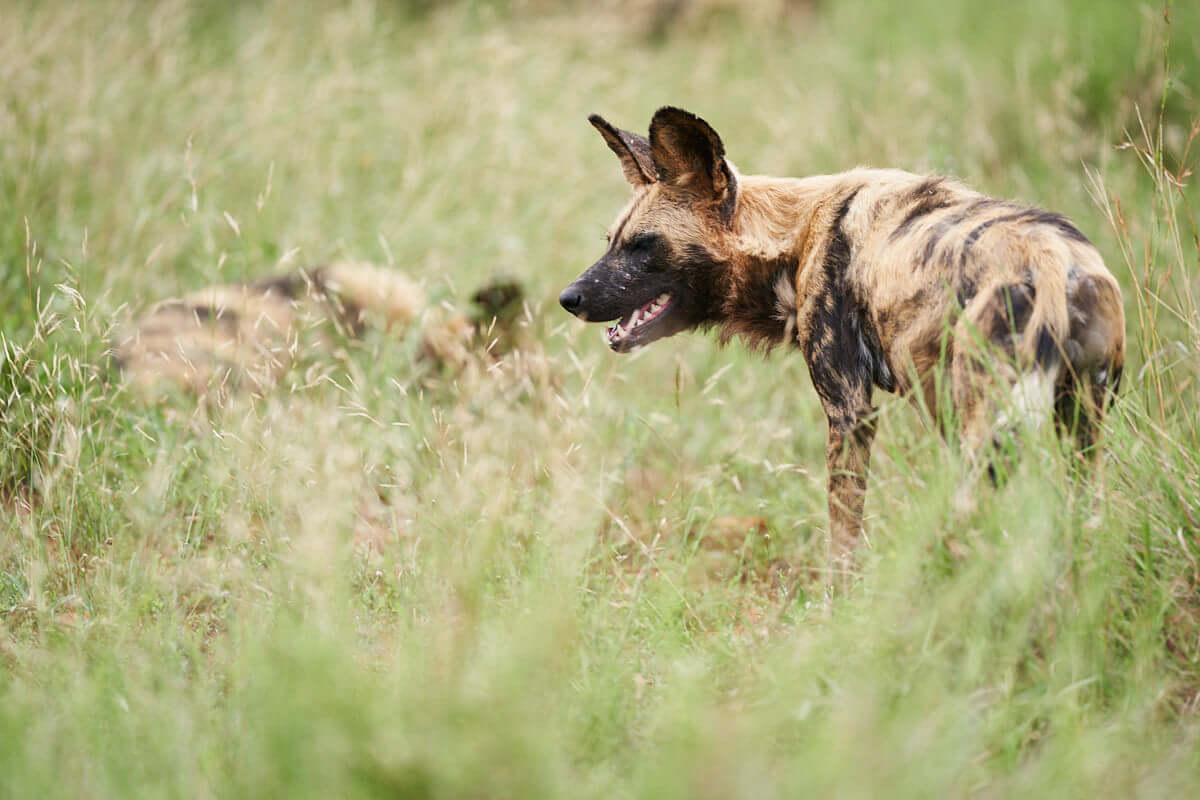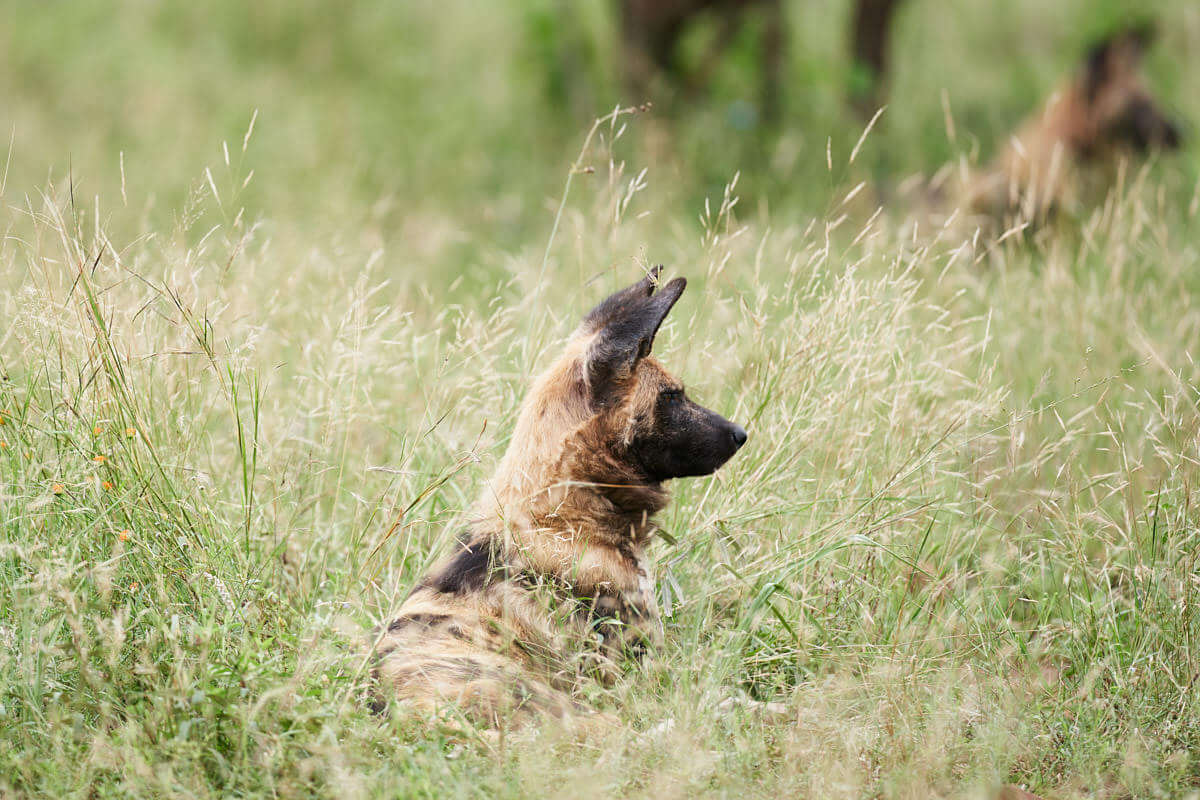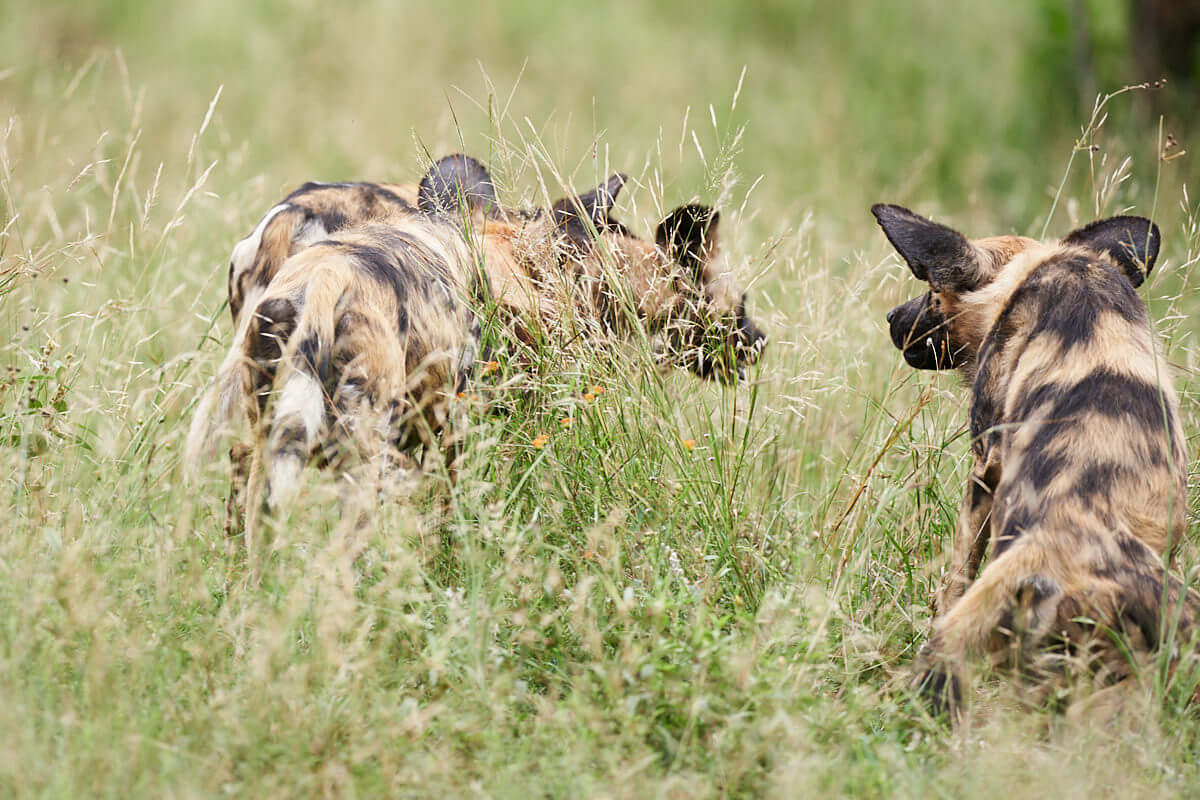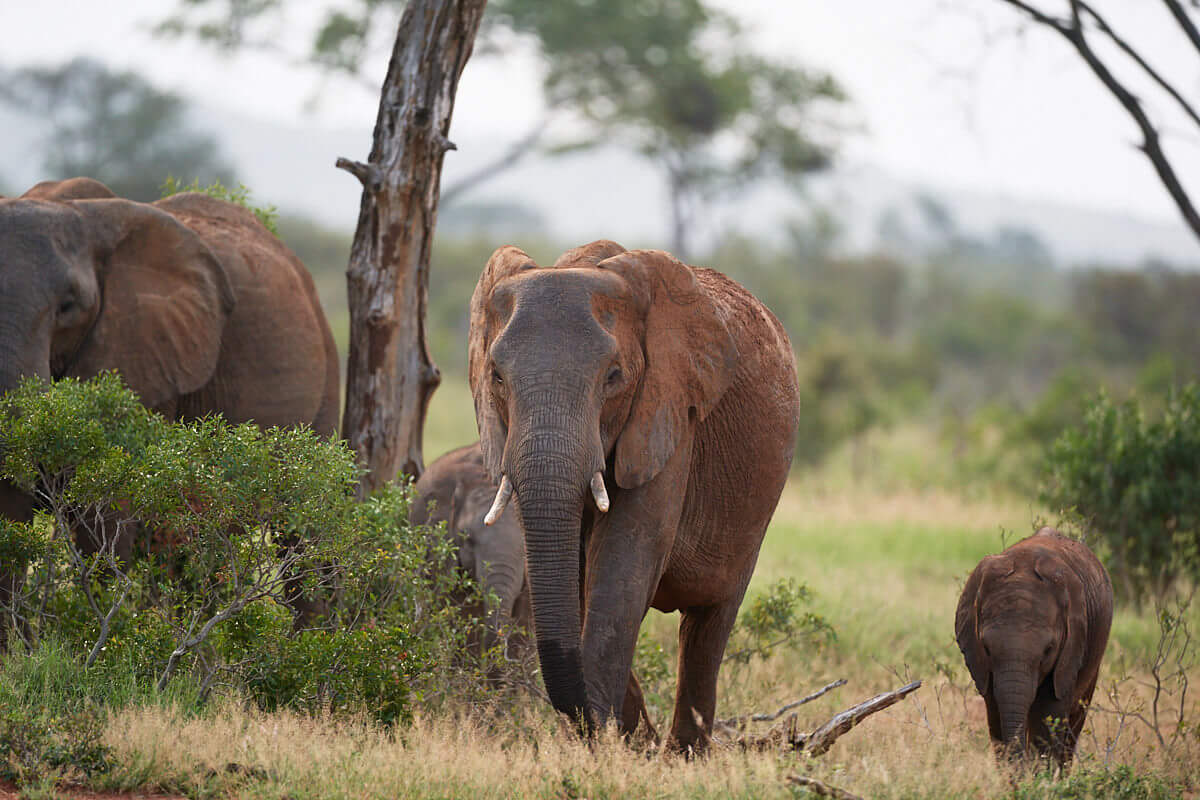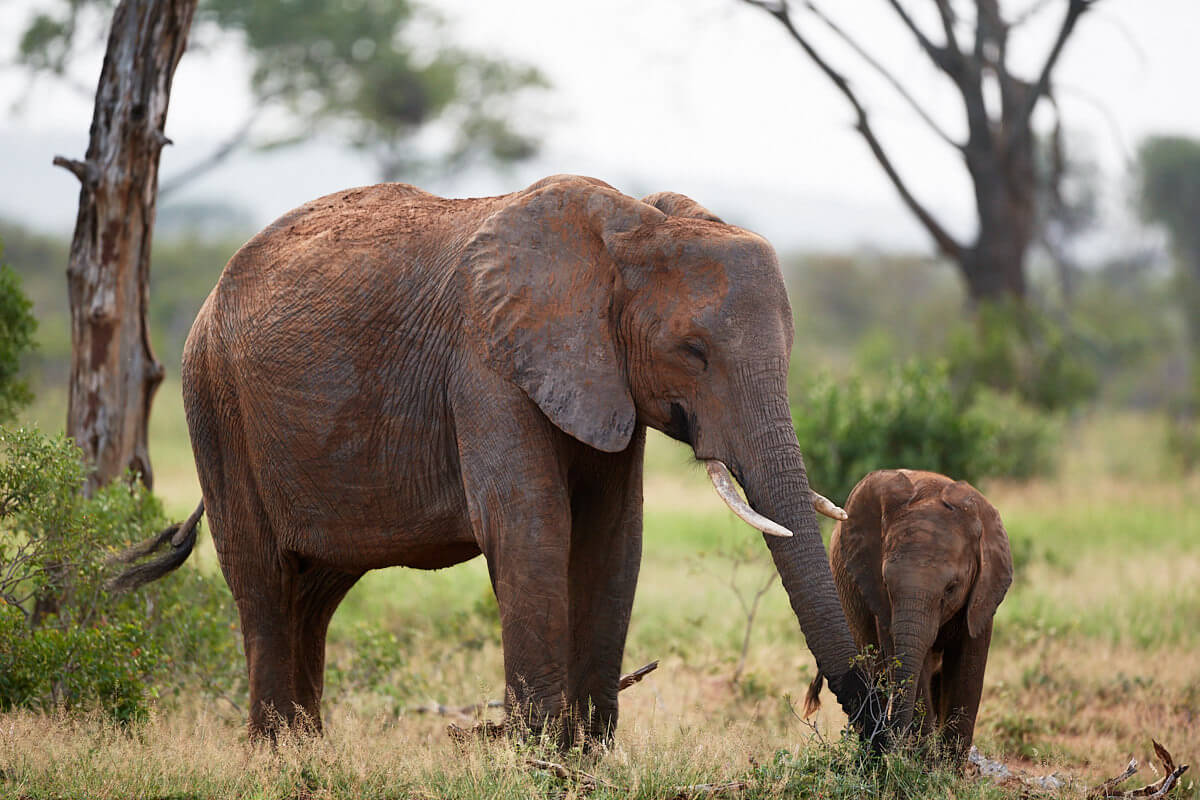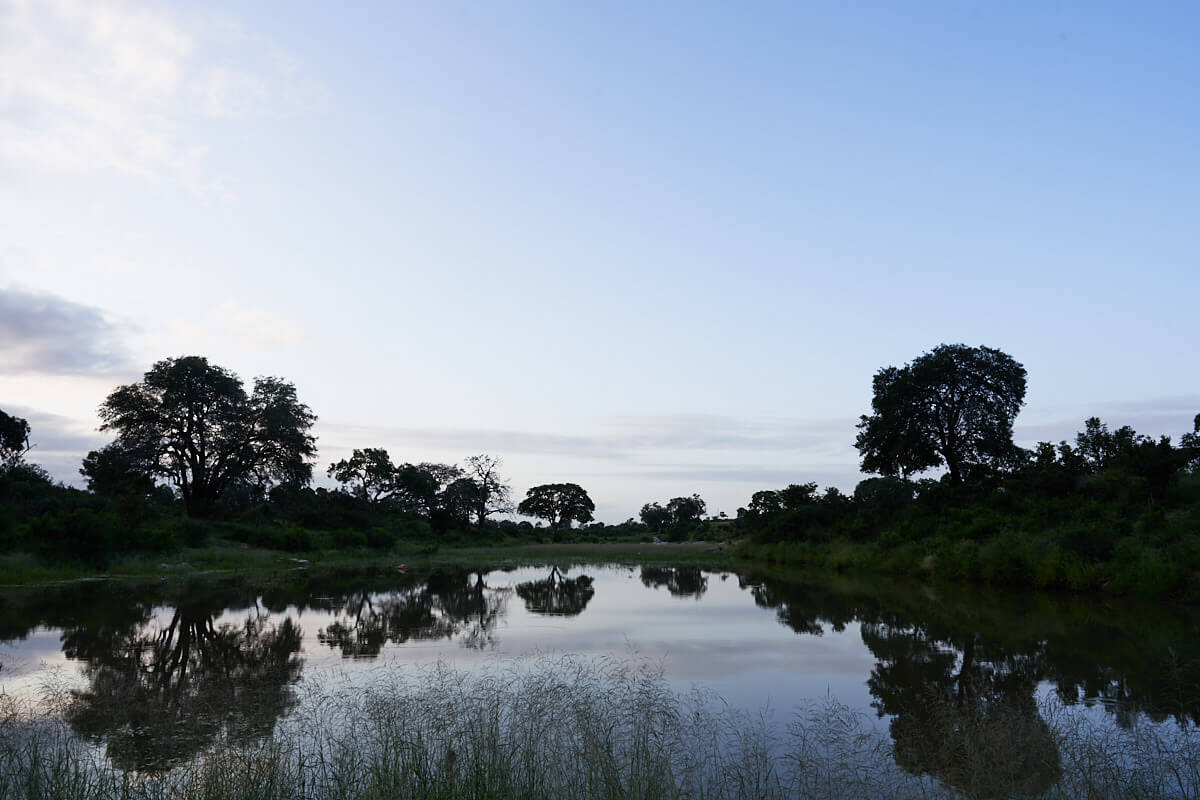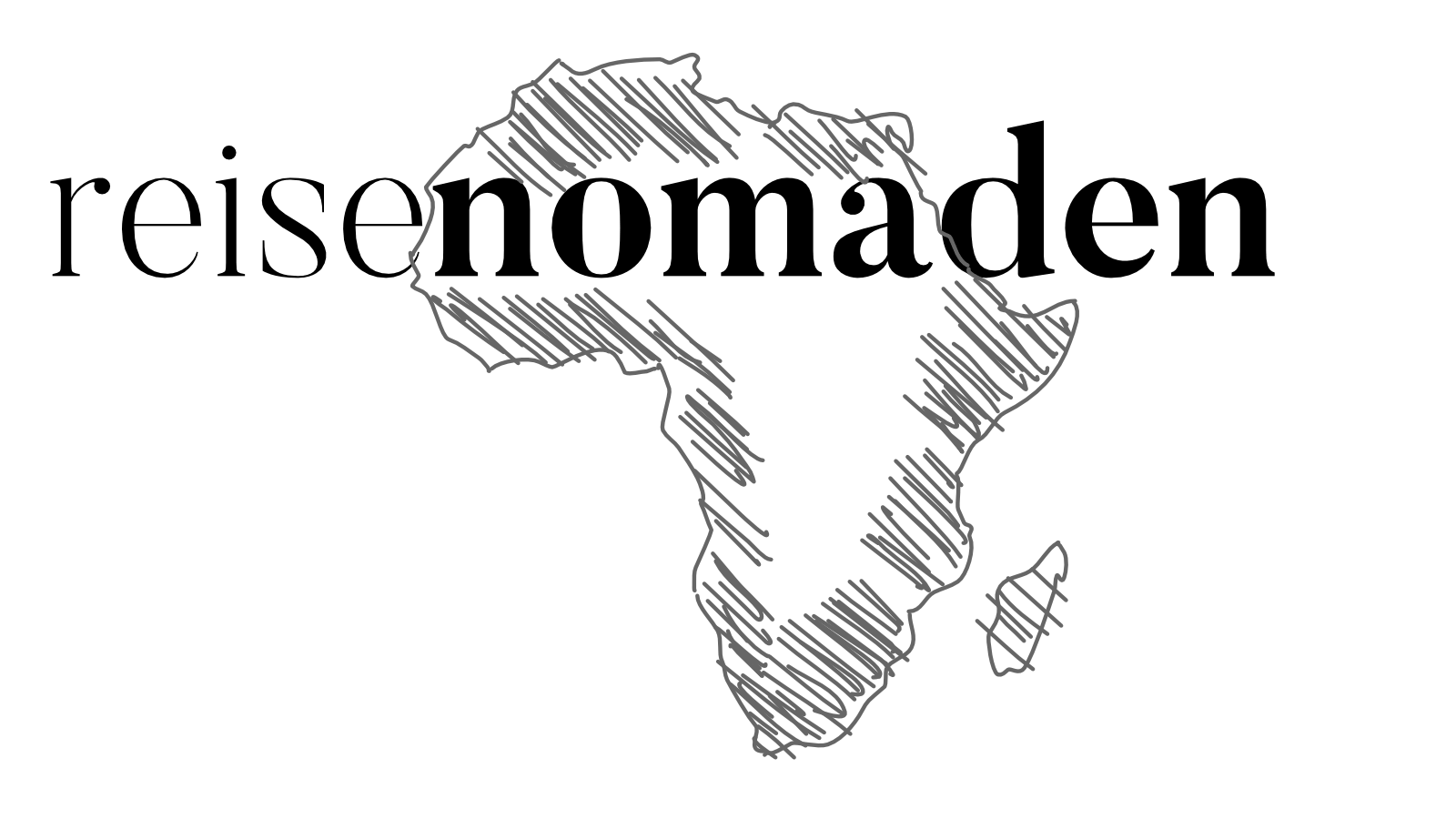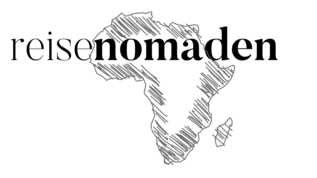Entering South Africa
After leaving Botswana via a small border crossing to South Africa, we drove about 150 km through game farms, gravel roads and “stone deserts”, which are rather seldom traveled by tourists. Our supplies were depleted, and the fridge was empty. We drove to Vryburg, the first major town on our way to the northeast of the country. There, we took the opportunity to stock up on supplies, get a new sim card for the cell phone and look for a place to stay for the night.
The search turned out to be comparatively easy because according to Tracks4Africa, there was only one hotel with campsites. It was located about 3 km outside the city. Once there, we met a retiree who was staying there for a week. He occasionally did his old (coaching) job for former clients. That was the context of his stay.
The next morning, we were eager to pay a visit to the local Toyota dealership to have the next service done. Sonja insisted on going to an ophthalmologist. She had been experiencing an irregular twitching in one eyelid for some time and thought an insect was the cause. We went to bed feeling tired, and the pensioner was extremely amiable the next morning. He called his client and inquired about an eye doctor for us – chapeau!
“Always lock your doors”
The address of Toyota was also quickly determined, and we were ready to go. Not quite because first the pensioner asked us to pray for our safety. Crime is constantly on the rise, and we must always lock our doors and close our windows, especially in cities, he advised. After asking the good Lord to watch over us, we left. That morning, a full five people warned us about fellow criminals. Among them were two black South Africans. Everything went smoothly at Toyota – we did the obligatory oil change, and it was time for new front brake pads.
After an hour everything was done and after a visit to the eye doctor in a private clinic (the doctor comes exactly one day a month!) and the realization that it was nothing dangerous, we headed towards Kruger National Park. We didn’t know yet how far we wanted to go. Sonja had classified the two smaller national parks that Guido had chosen to make the stages more driveable as “not worth visiting”.
Recommendations are most important
Just at that moment, a message arrived from Rosana. We met Rosana and Mark several times in the Central Kalahari, and we had good conversations with them and exchanged our contact details. Mark is Dutch and Rosana is Brazilian, and both live in Colorado, USA. They bought a Land Cruiser which is privately stationed in Pretoria and come to Southern Africa at least 2 times a year.
When Rosana read our route, she recommended that we definitely go to Pretoria, to the couple where their car is parked. The couple have grown up children who are out of the house, a much too big house, a huge property and a desire to meet people. Thus, they founded accommodation for backpackers. In their (park-like) garden you can camp, and you can also use the pool. If you want, you can have an excellent private dinner with them for a ridiculously low amount.
We have a break in Pretoria
That all sounded perfect and after sending the contact details, we contacted Kevin and Cécile Trollope in Centurion, and we had a lot of luck! They gladly took us in and because the two are good-hearted people, we stayed directly two nights and had an incredibly good time. Kevin is South African and Cécile is French. They have two sons and two daughters scattered all over the world (Berlin, Canada and Mozambique). This accommodation is to be recommended over all masses. They offer beside the garden for campers also a guest house with two bedrooms and a large bathroom. Everything is on an upscale level – only the prices are comparatively moderate to cheap, and the food is incredibly delicious.
One more recommendation
Kevin referred us for our onward journey to good friends who own a farm in Louis Trichardt and rent prof. Campsites. They also offer cottages and an apartment. Gail and Alistair Maytham (Zvakanaka farm) were the next bang for the buck. We arrived, toured the campsite Swiss, felt in love and stayed for two nights. Gail invited us for a private dinner the next night. It was an experience as if we had known each other for ages. Both were born in Zimbabwe, Gail also has a British family heritage. They have lived in South Africa for a long time. Especially regarding our planned trip to Zimbabwe, Al could give us a lot of information. Rating: highly recommended. Before we go to Zimbabwe, we will probably visit them again and enjoy them and their farm once more.
Kruger National Park
The next morning we set out to enter Kruger National Park through the Pafuri Gate. We had no reservations and wanted to see what awaited us. The ranger at the gate laughed at us and said, “No reservations? We have school holidays, do you know that?” Yes, we heard about it … School holidays means that half of the population of South Africa takes the trailer out of the garage, and drives somewhere. For us, it was more of a game, and we wanted to see how far we would get – without bookings at a time when the park is running under fully booked.
To say it in advance: the Kruger Park is not for us. There are many reasons for that. The most important ones:
The park consists mainly of tarred roads and is designed to allow vehicles to travel through it. So, there are many limousines and caravans of 6+ meters length we encountered more often than off-road vehicles. All camps in the park are fenced. If you’re used to being able to move around freely, you’ll quickly feel caged in. The gates close at the best photo time – 6:00 pm. That’s when everyone has to be in the camp. If you’re not, you’ll pay a 1,000 ZAR fine (CHF 70.00) after a grace period of max 15 minutes.
Let’s do the crossing!
The north is comparatively sparsely visited and always offered us the possibility to escape the mass of cars during game drives. You basically only have to drive roads that are a bit away from the camps, and you are alone. The further south we went, the worse it got. Guido wanted to leave the park after four days and two camps (Punda Maria and Shingwedzi). Sonja wanted to see what happens next. From the wildlife aspect, the Kruger Park offers many sightings. Guido agreed, and so we continued to stay in the park and worked our way further south from day to day and camp to camp.
Experiences with South Africans
What is highly noticeable, however, is the immediately apparent ignorance of many visitors. Elephants, for example, can’t stand engine noise, which is why you should kindly turn off the engine when a sighting occurs. South Africans don’t think much about it. They drive with closed windows and air con on and leave the engine running all the time. Several times we have suffered when a car drives back and forth next to an elephant, “chasing” it, so that someone from the back seat was able to take pictures with a cell phone.
In the end, the elephant always fled with loud trumpeting and running into the bush. People don’t know any better because no one explains it to them. There is no leaflet, no information – simply nothing. Kruger Park is certainly one of the most economically productive national parks in the world. It would be easy to make visitors aware of some behaviors and thus make it easier for the animals in some situations. South Africans are notorious as guests in Africa and do not enjoy a good reputation.
We can now relate to this. The South Africans we encountered in Kruger Park were predominantly noisy, set up gigantic camps, formed caravans, turned night into day with LED strips up to 2 meters long and showed little to no consideration for fellow human beings. We do not want to and cannot generalize, but if our friends in Namibia now talk about South African guests, or guest house owners in Botswana, then we understand what they are talking about.
We have arrived in the south
In the end, we actually managed to make our way from the north all the way to the south, and we spent a whopping 13 nights in the park. 6 nights in two great camps. Tsendze Camp, located in the middle of the park, has comparatively increased privacy and features Roger, the camp manager, a person who is always smiling and in a good mood (“you get sick if you don’t smile”).
Roger knows everything about owls and showed everyone who was interested the owls in camp. The camp was very clean and well maintained and had a very pleasant atmosphere. The second camp that was convincing was Malelane Camp. It is tiny, located nearby the Malelane Gate in the south of Kruger Park and accommodates about 10 campers. We stayed here for two nights before leaving the park and heading for Eswatini (ex Swaziland).
For whom is the Kruger National Park a blessing?
The Kruger Park is great for families with children. We don’t know of any game reserves where it is possible to see wild animals and go on game drives with children. Moreover, it is something else to camp in the wilderness without a fence with small children. We wanted to visit the Kruger and have done so now. Despite wonderful sightings, especially the bathing elephants, we have no desire to repeat. Now, after almost 4 months in the bush, we allow ourselves some time off and travel via Eswatini to the south and see if we can find a place to rest and relax. Moreover, it is something else to camp in the wilderness without a fence with small children.
We wanted to visit the Kruger and have done so now. Despite wonderful sightings, especially the bathing elephants, we have no desire to repeat. Now, after almost 4 months in the bush, we allow ourselves some time off and travel via Eswatini to the south and see if we can find a place to relax at the beaches- either in South Africa or in Mozambique.
